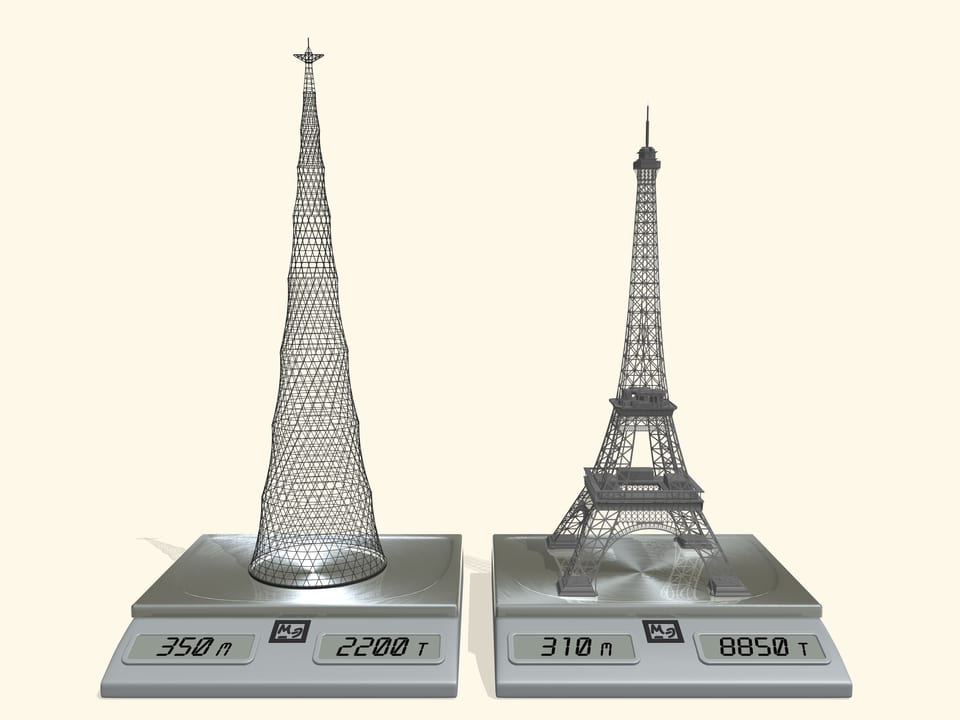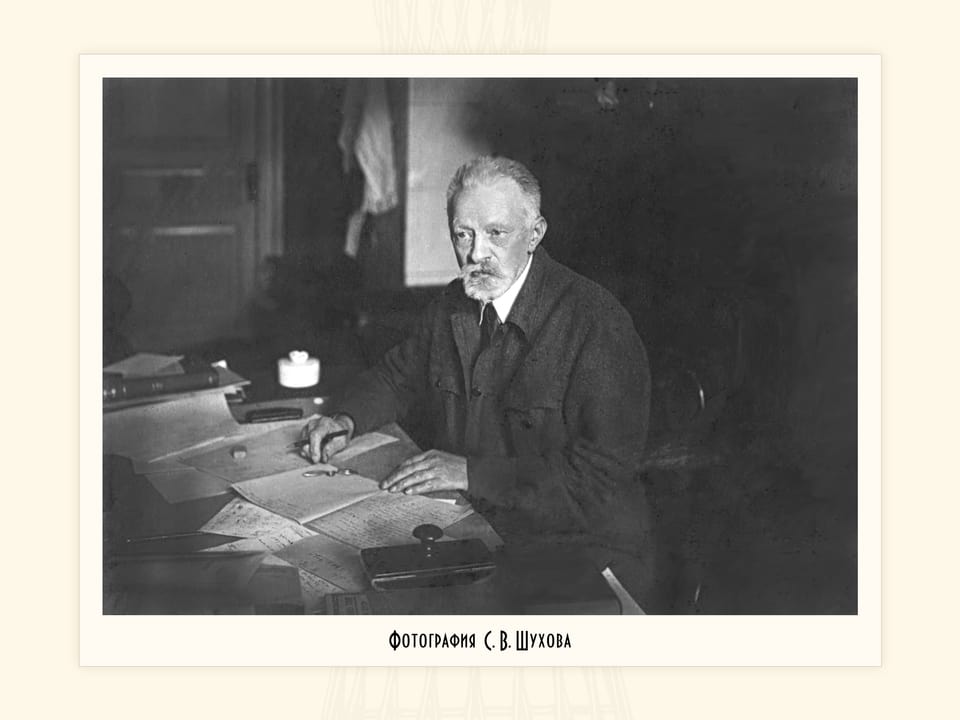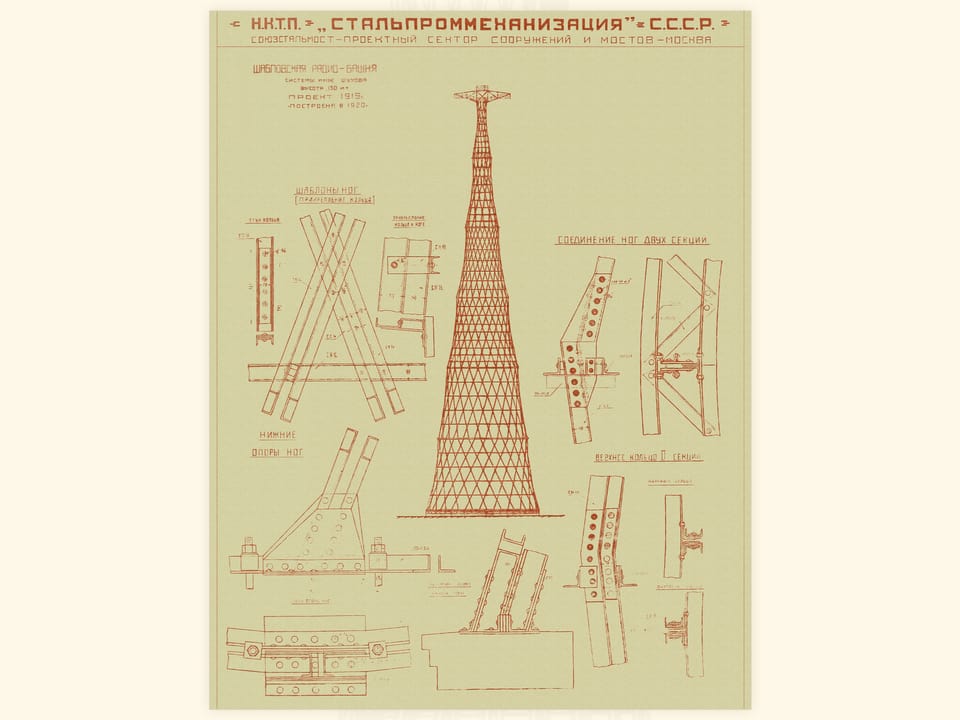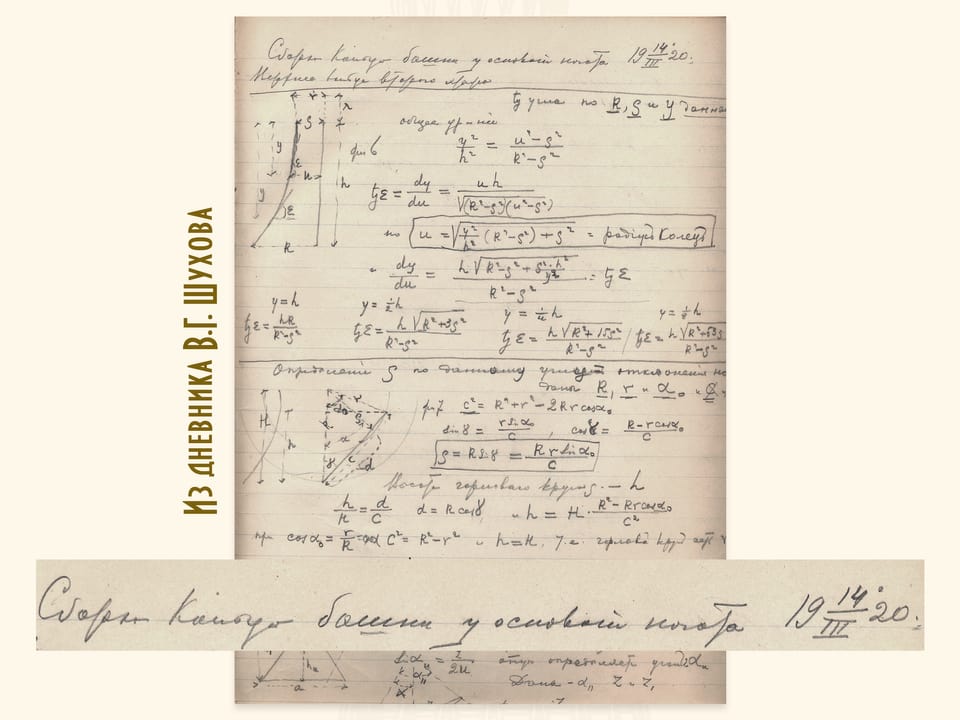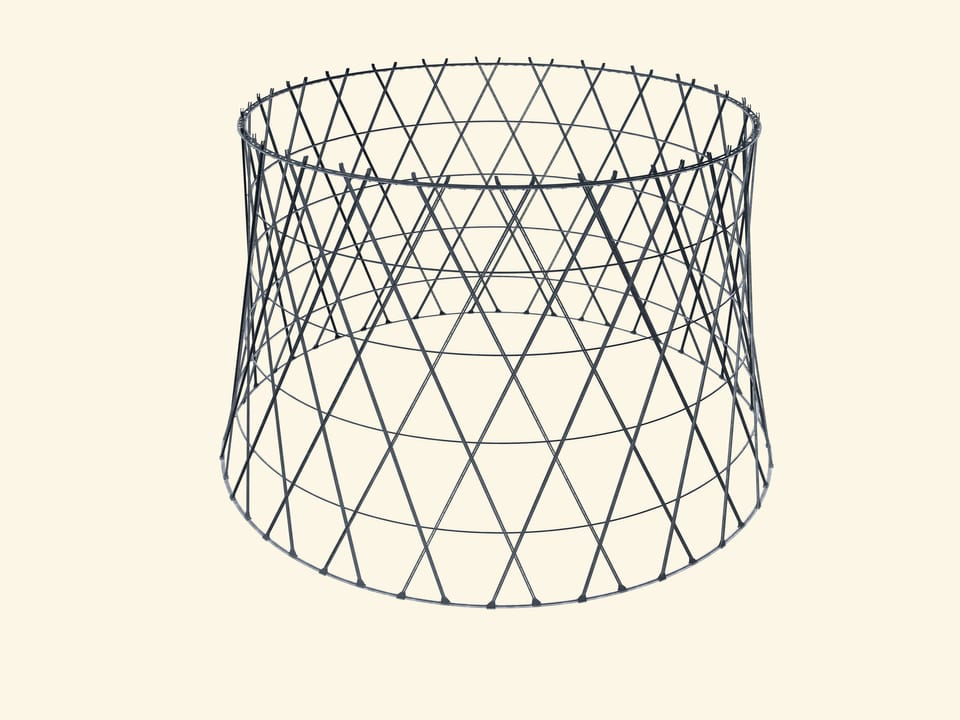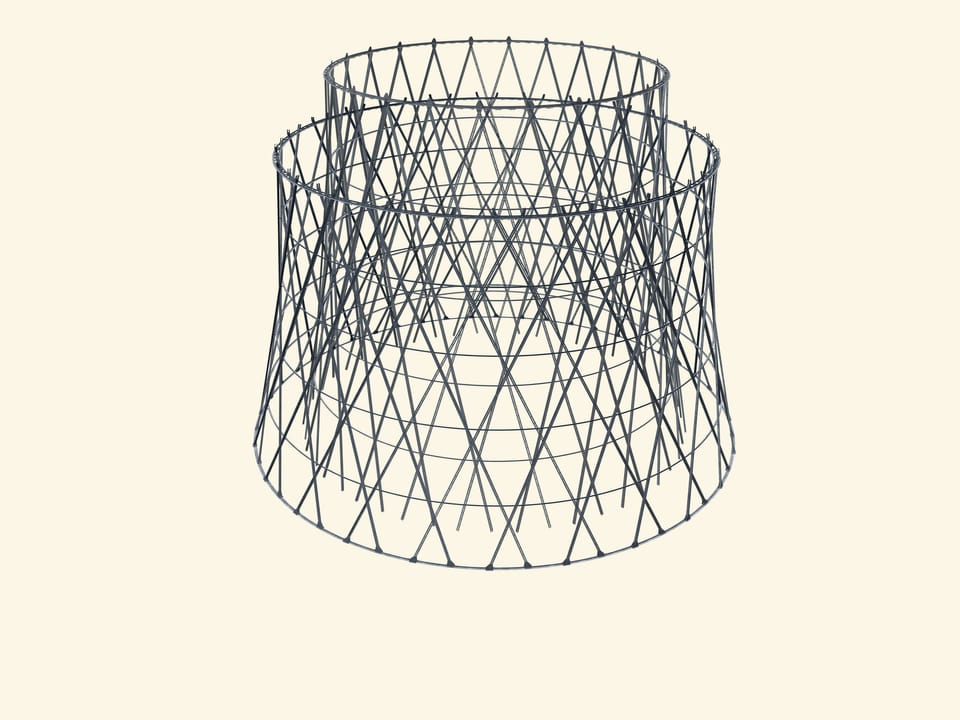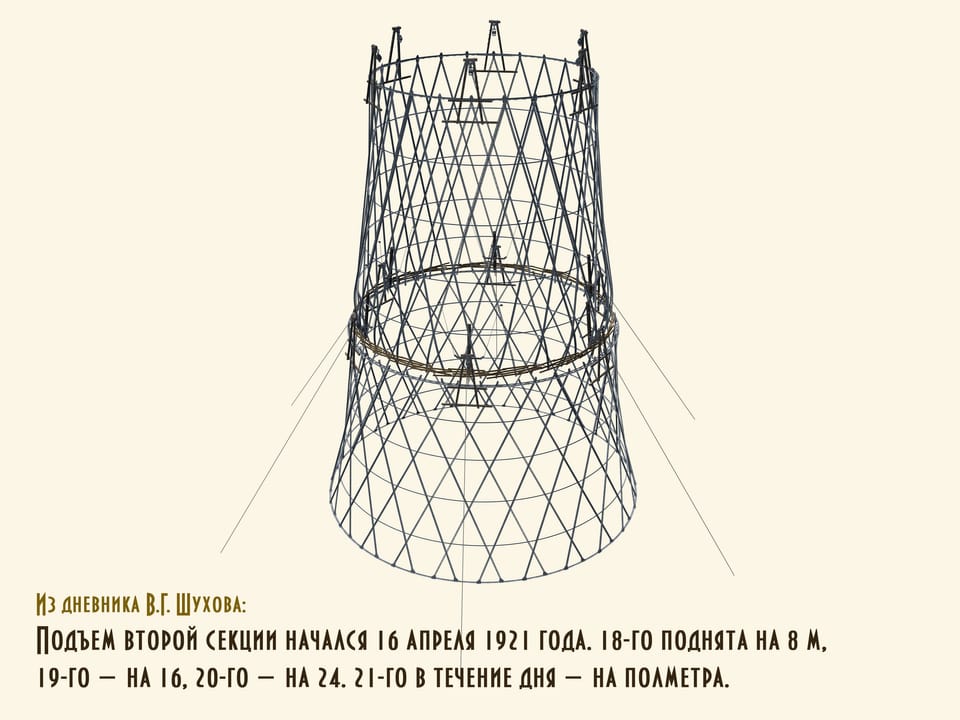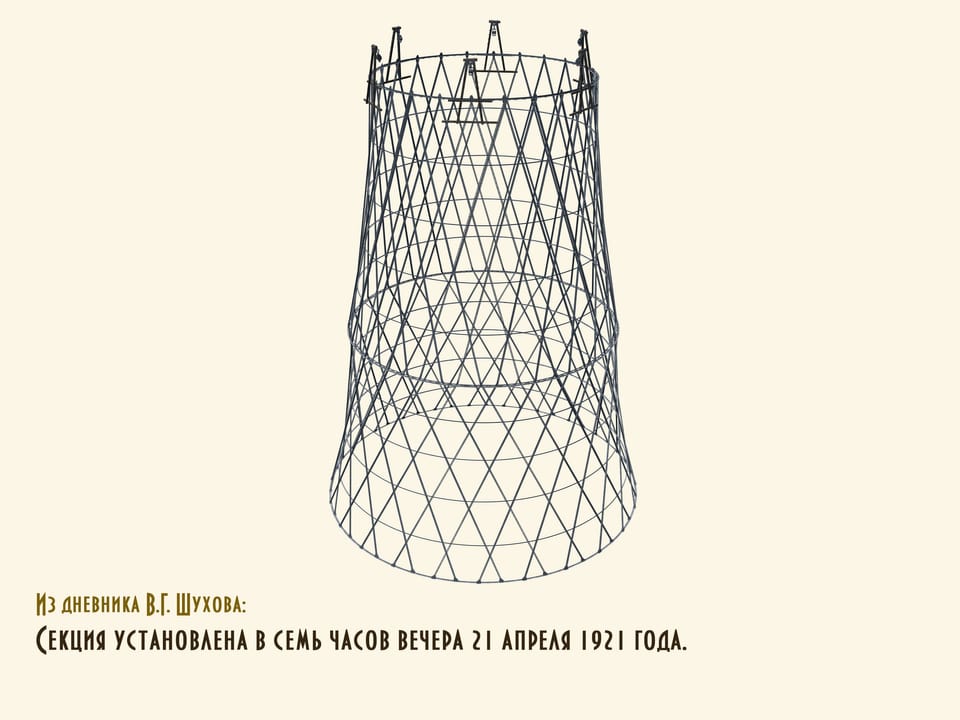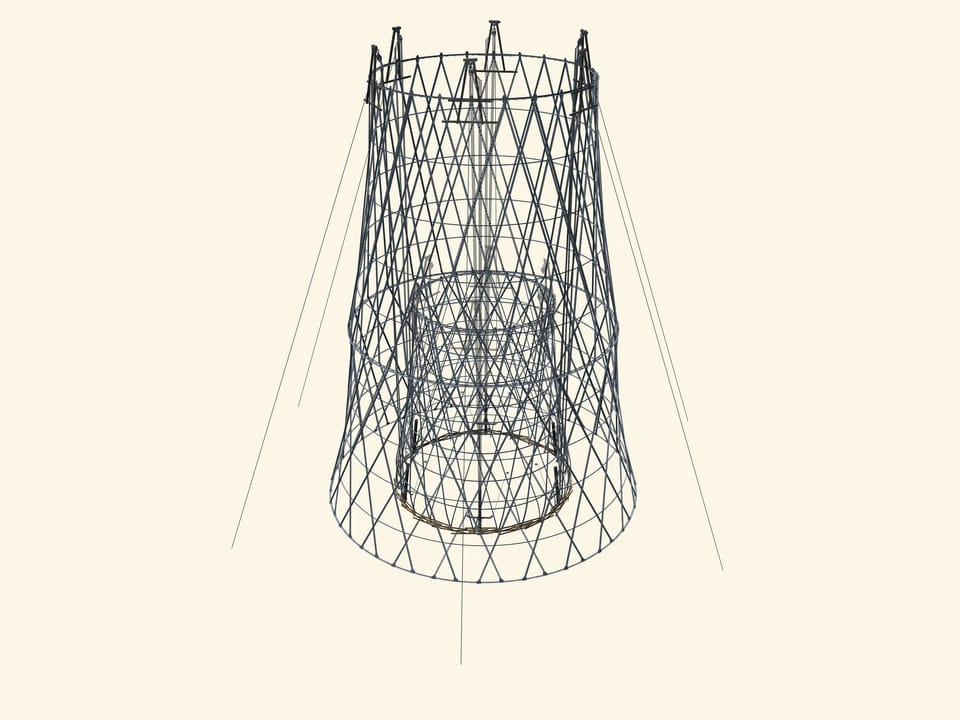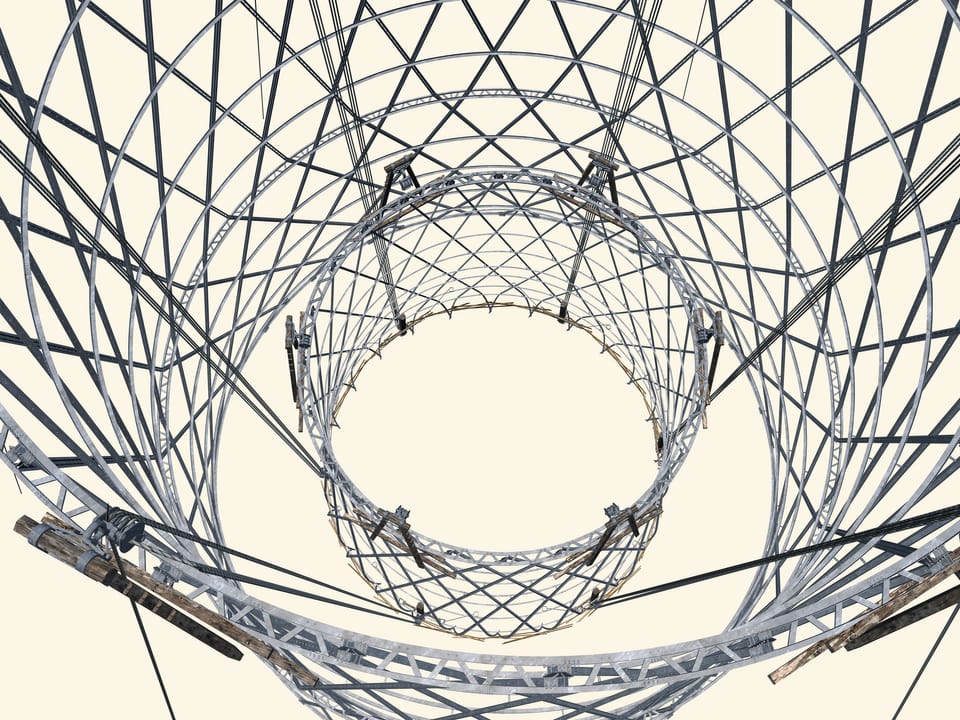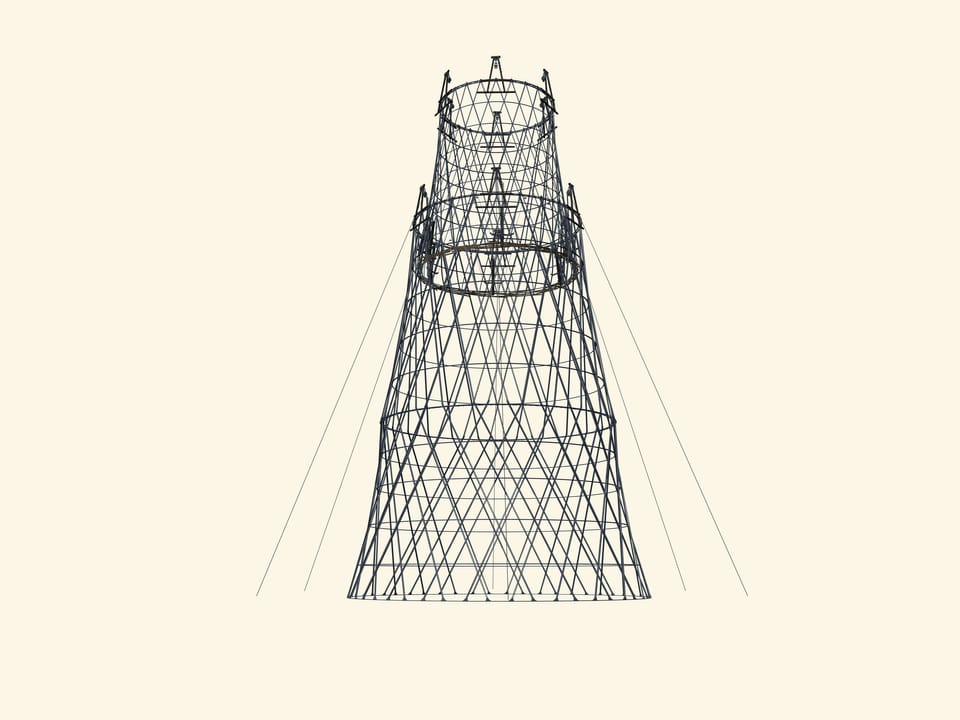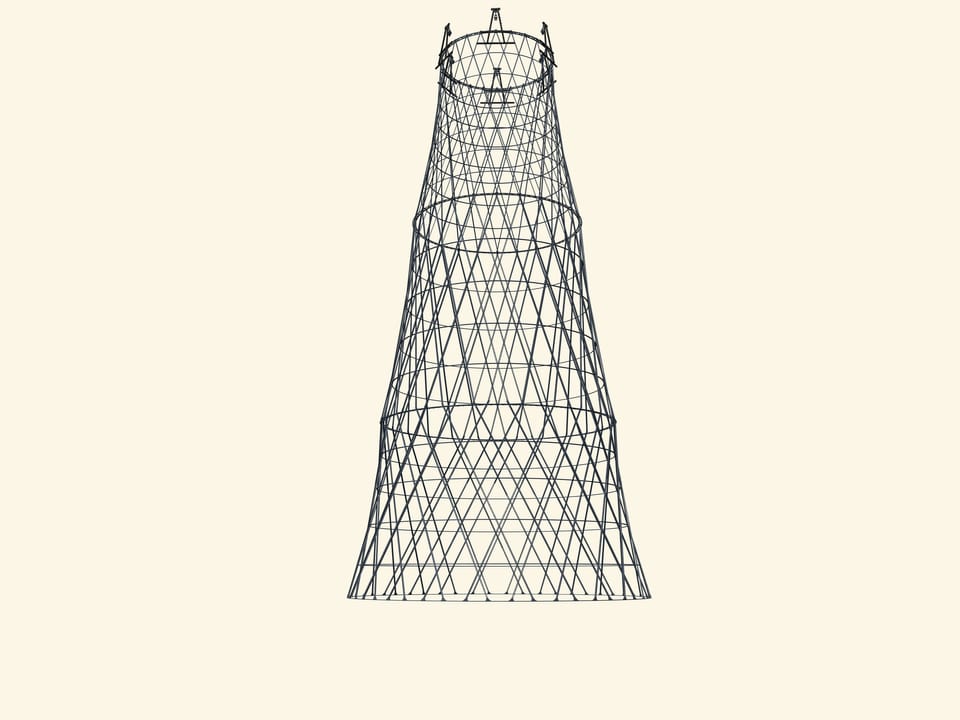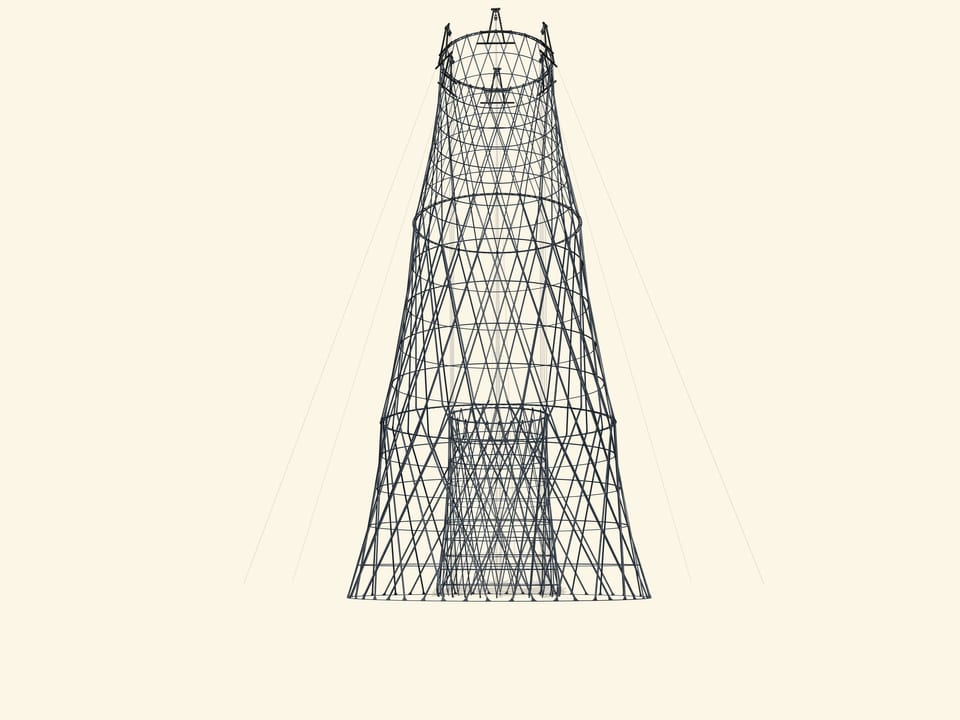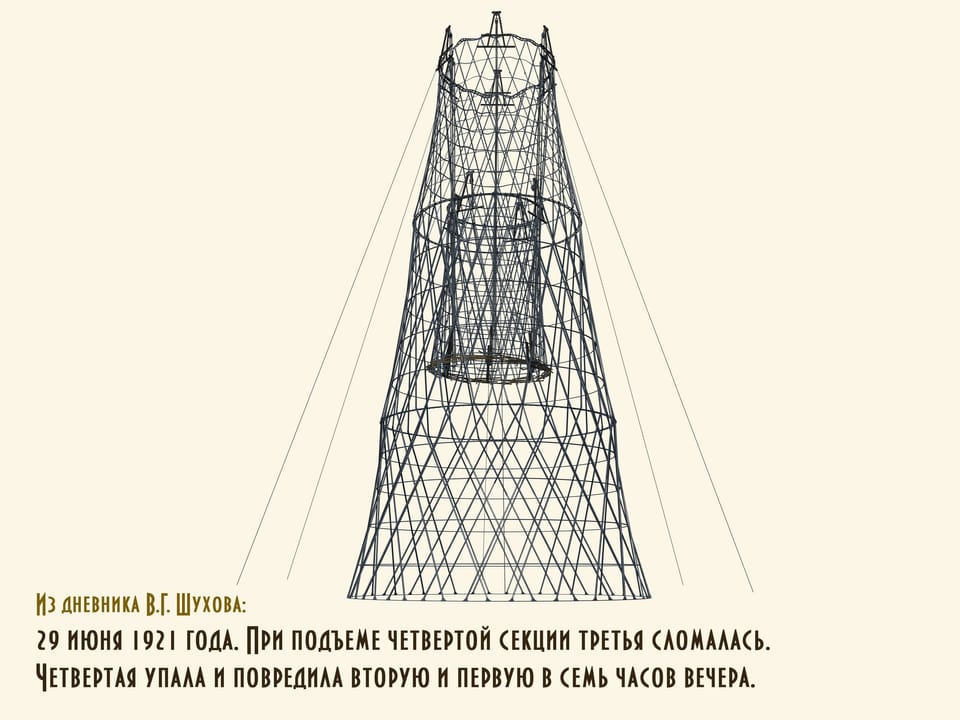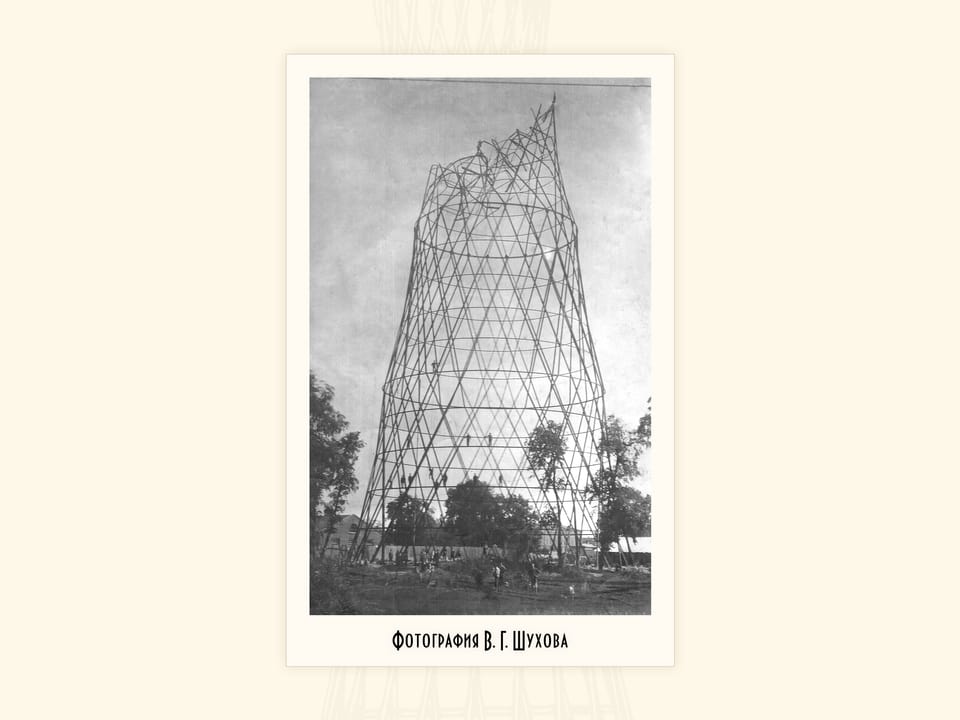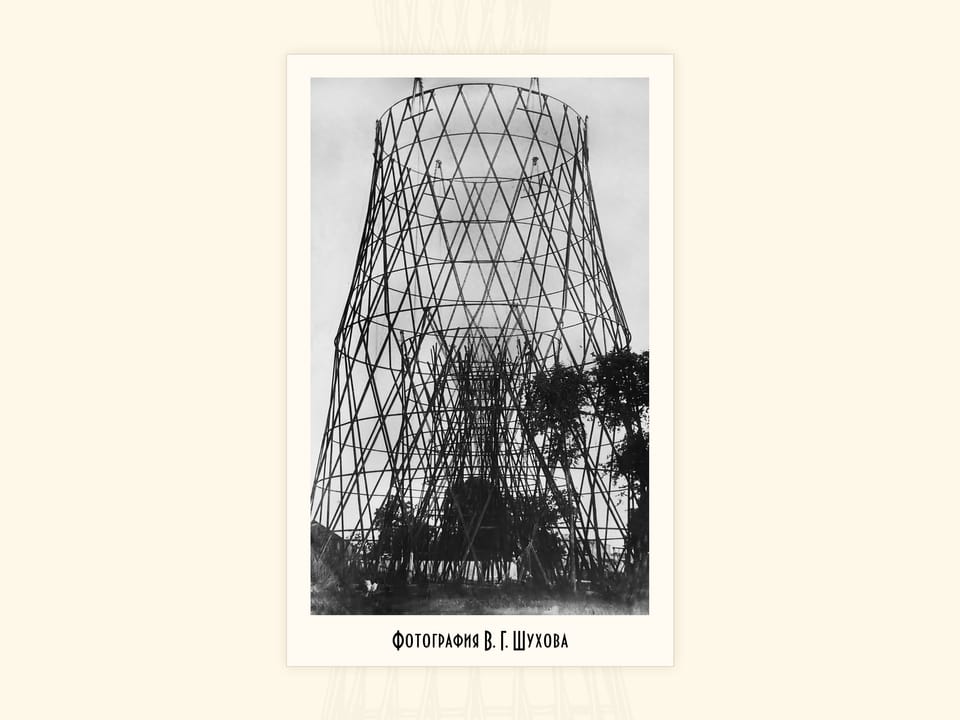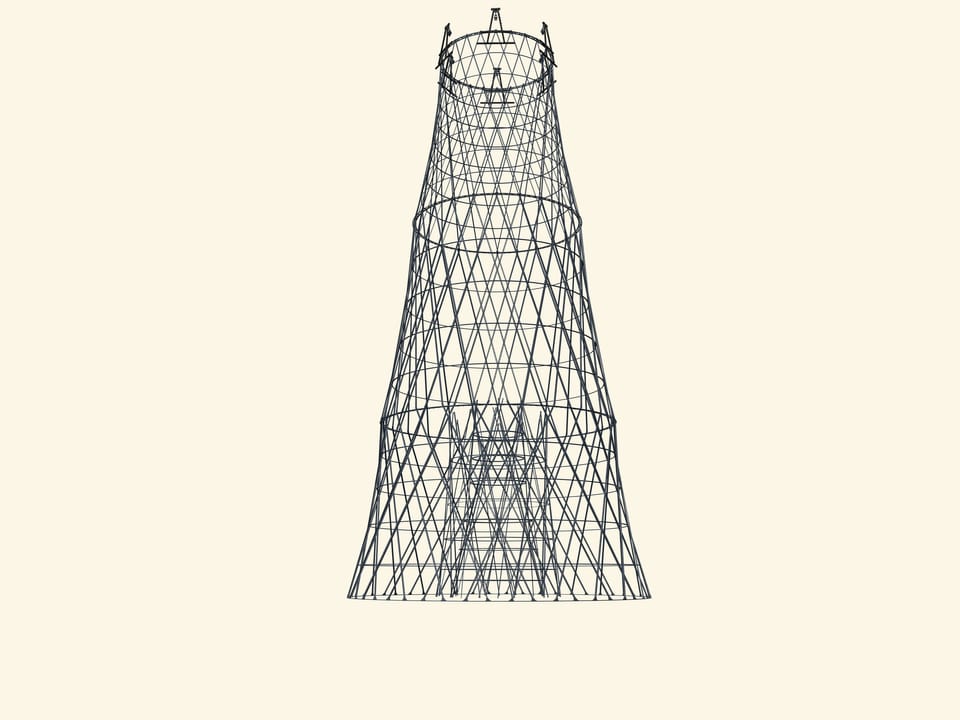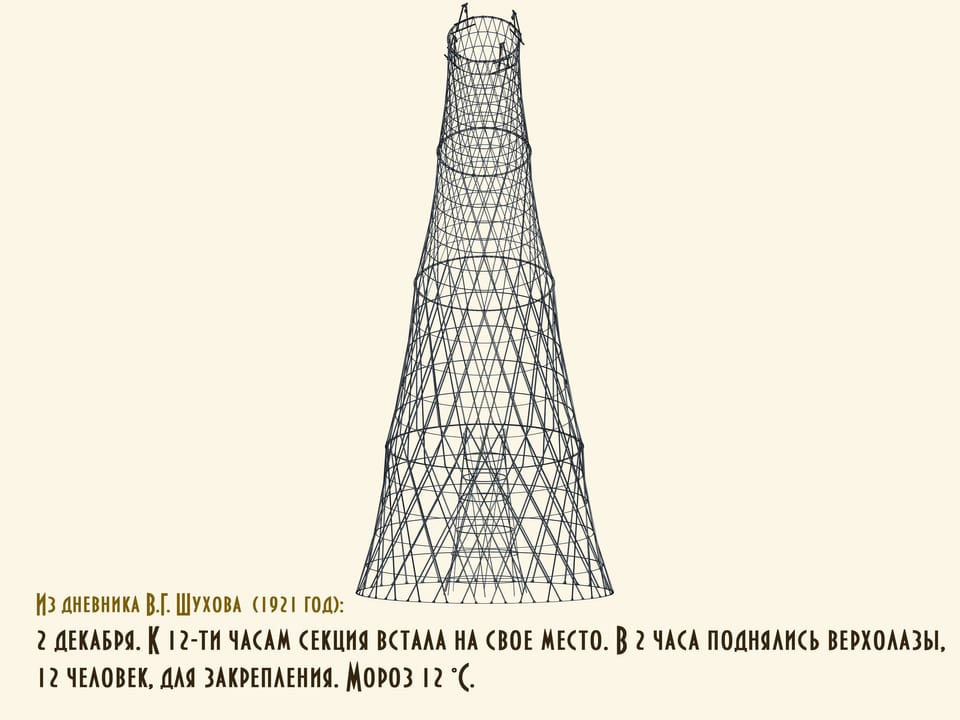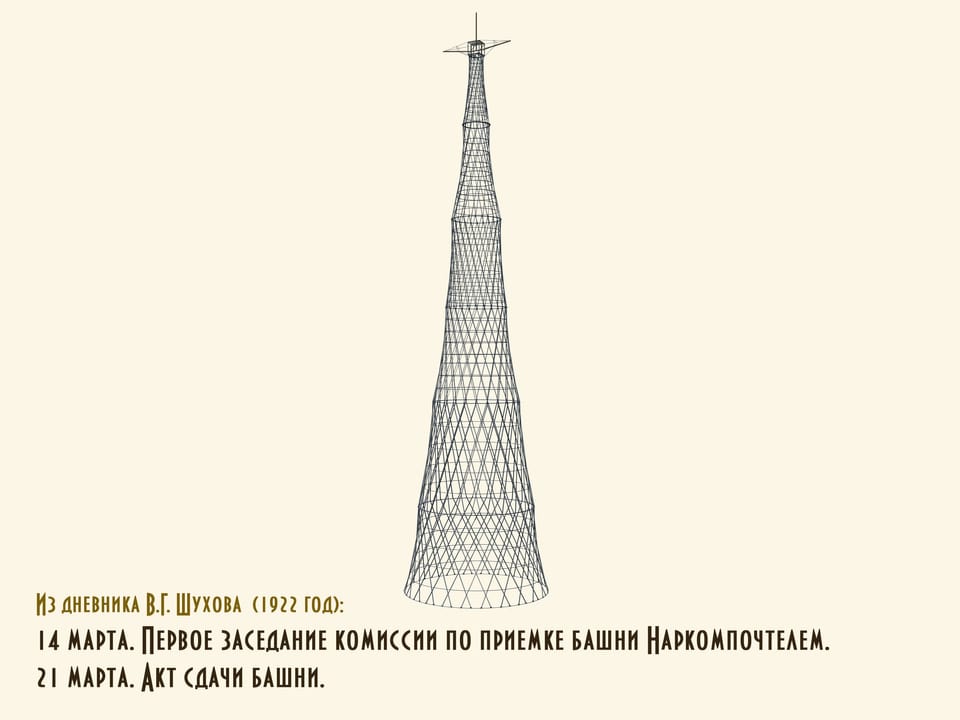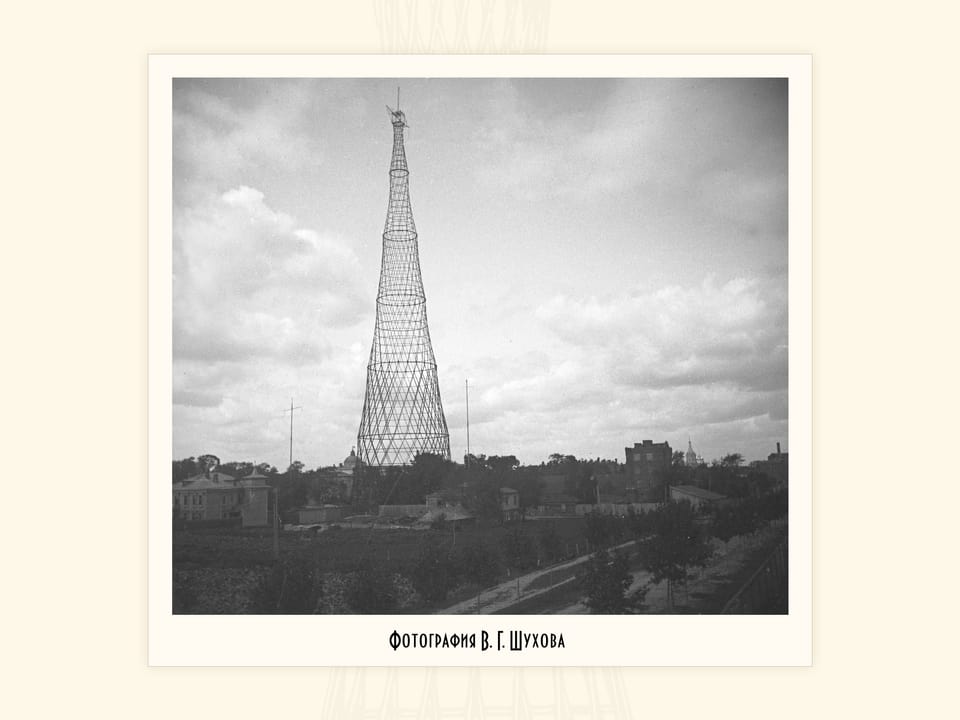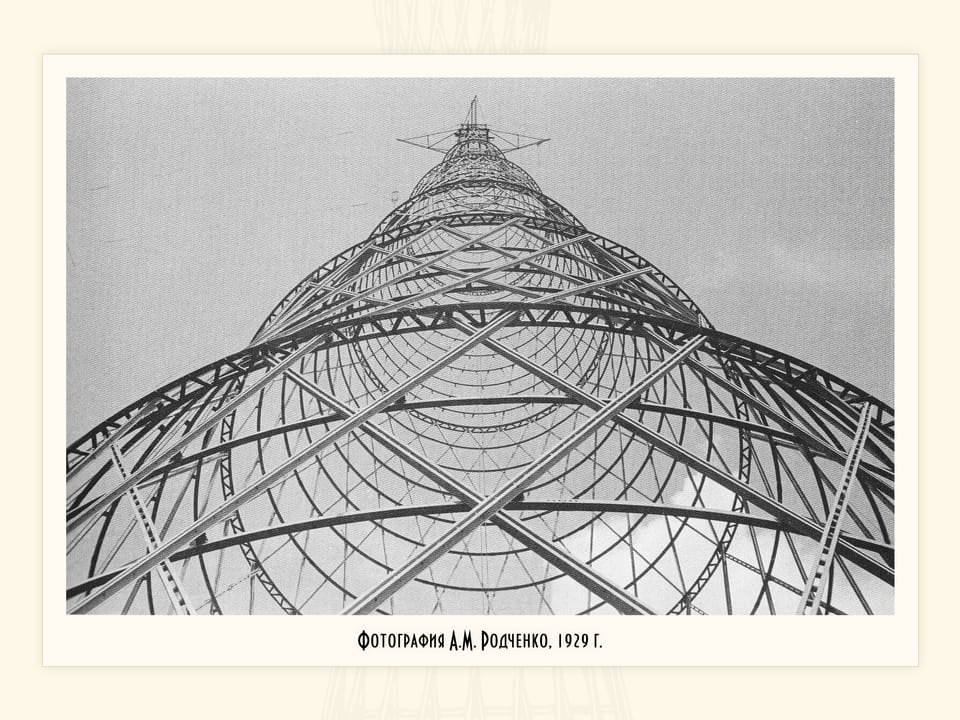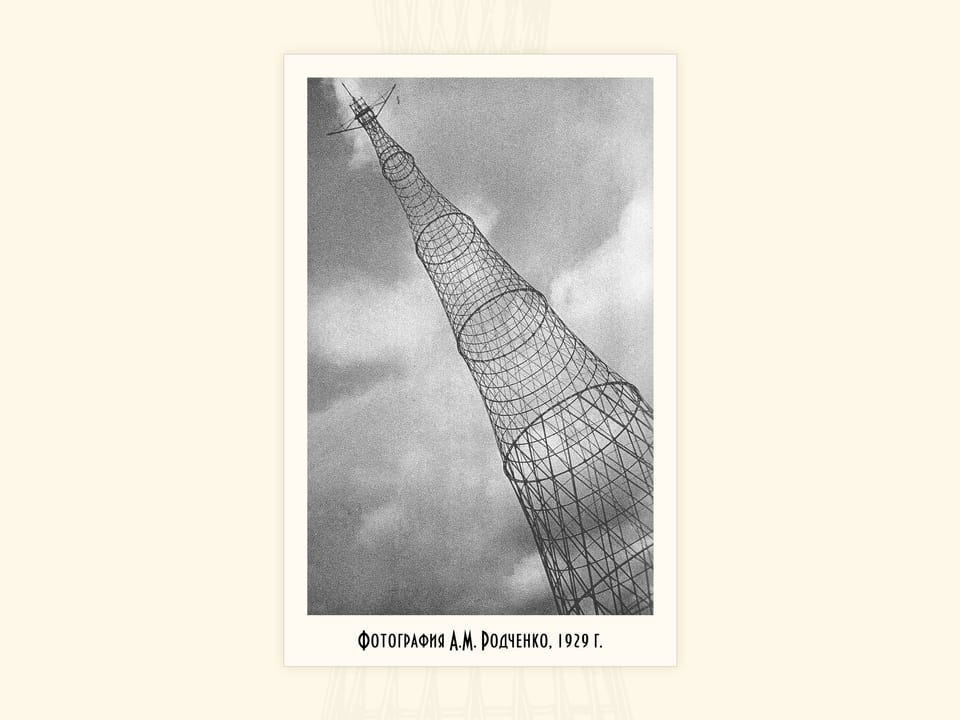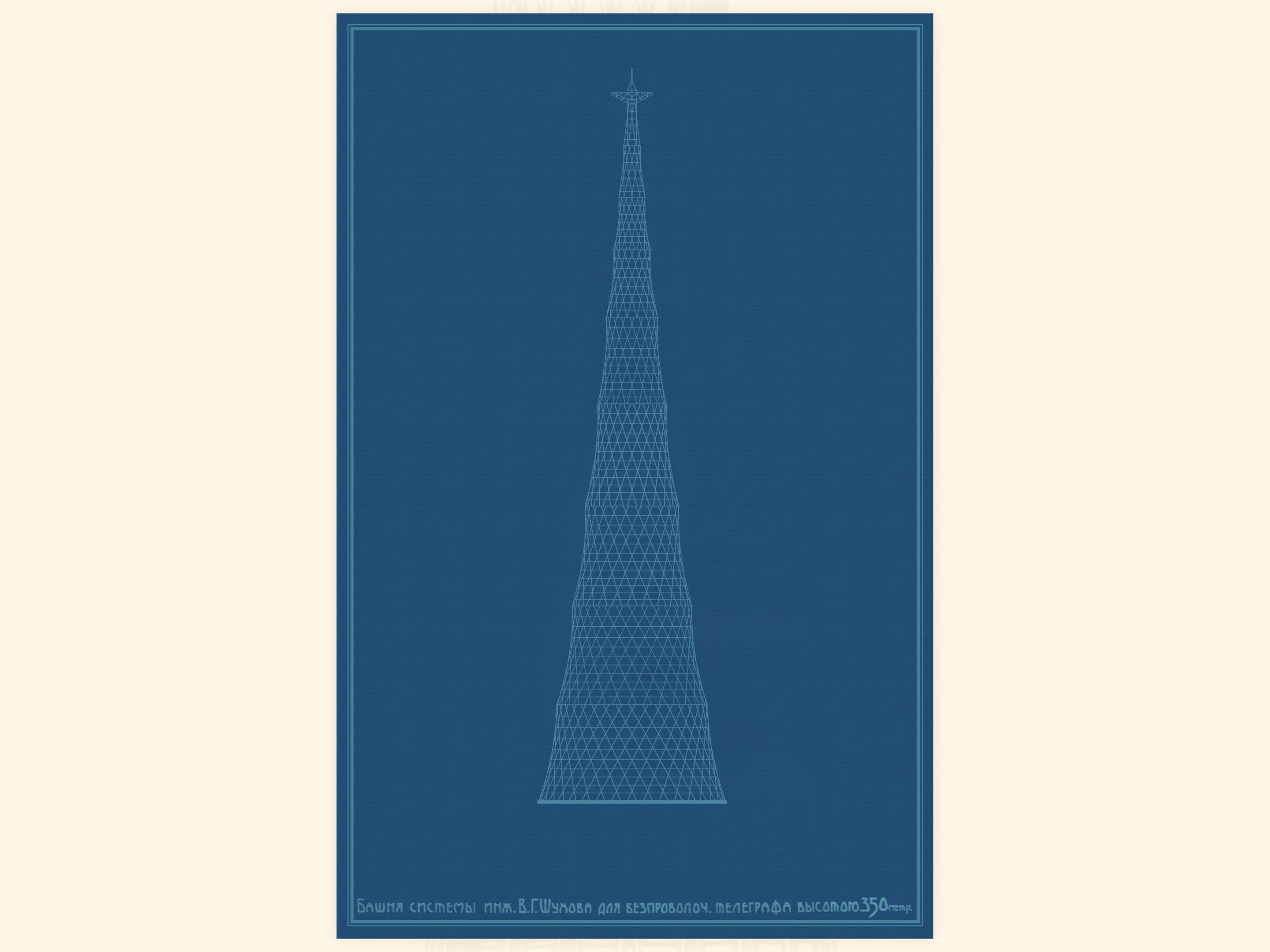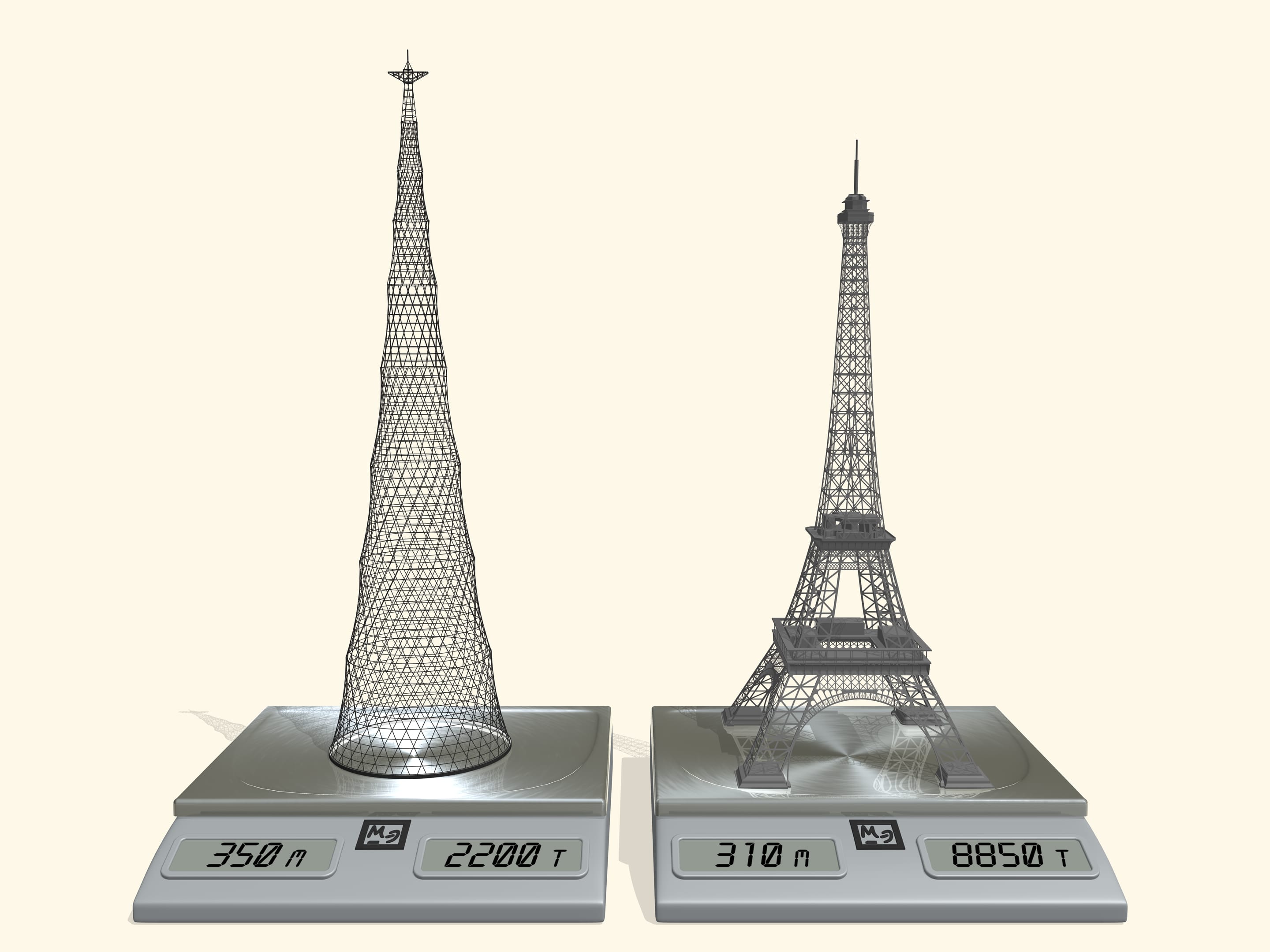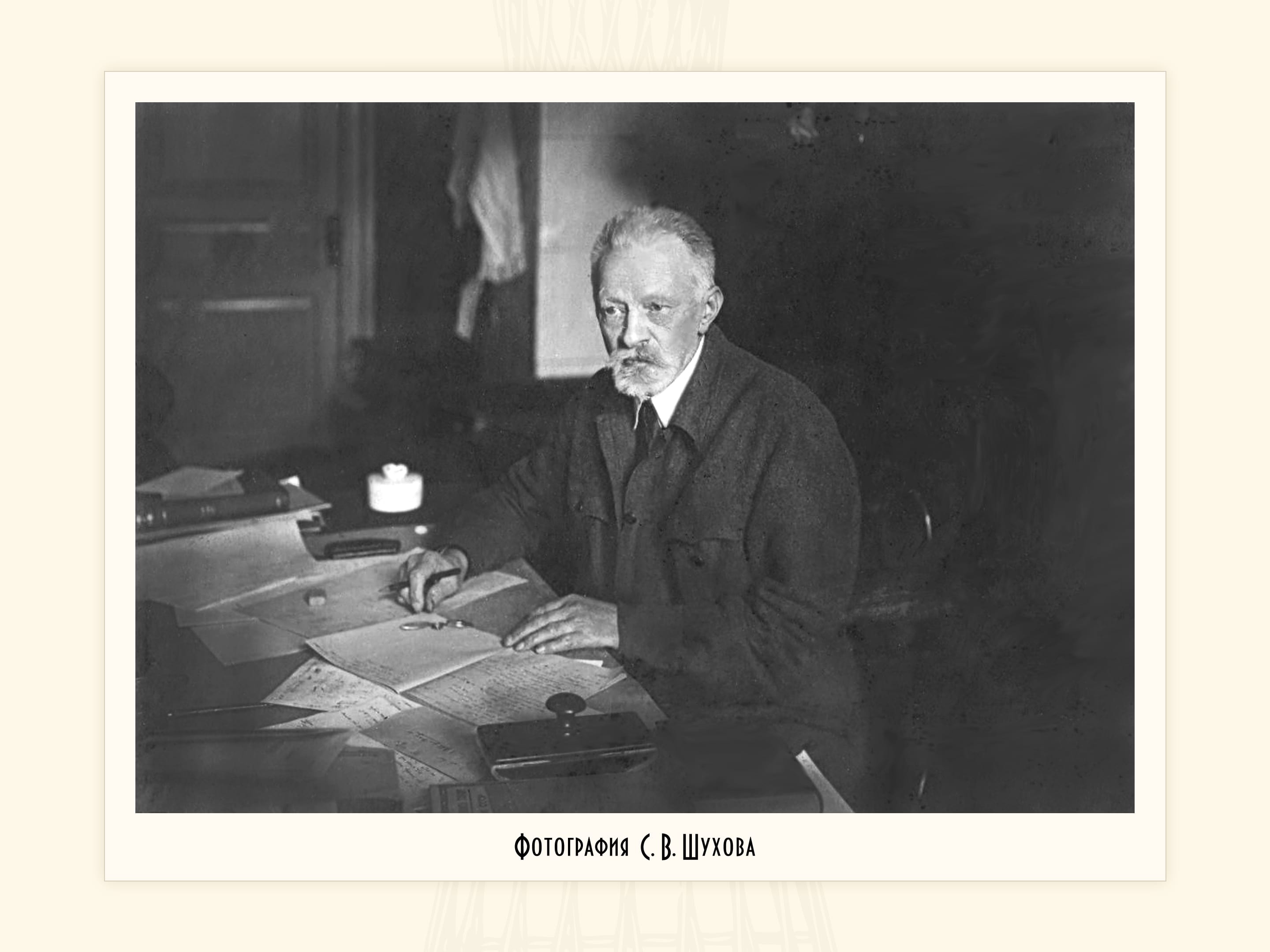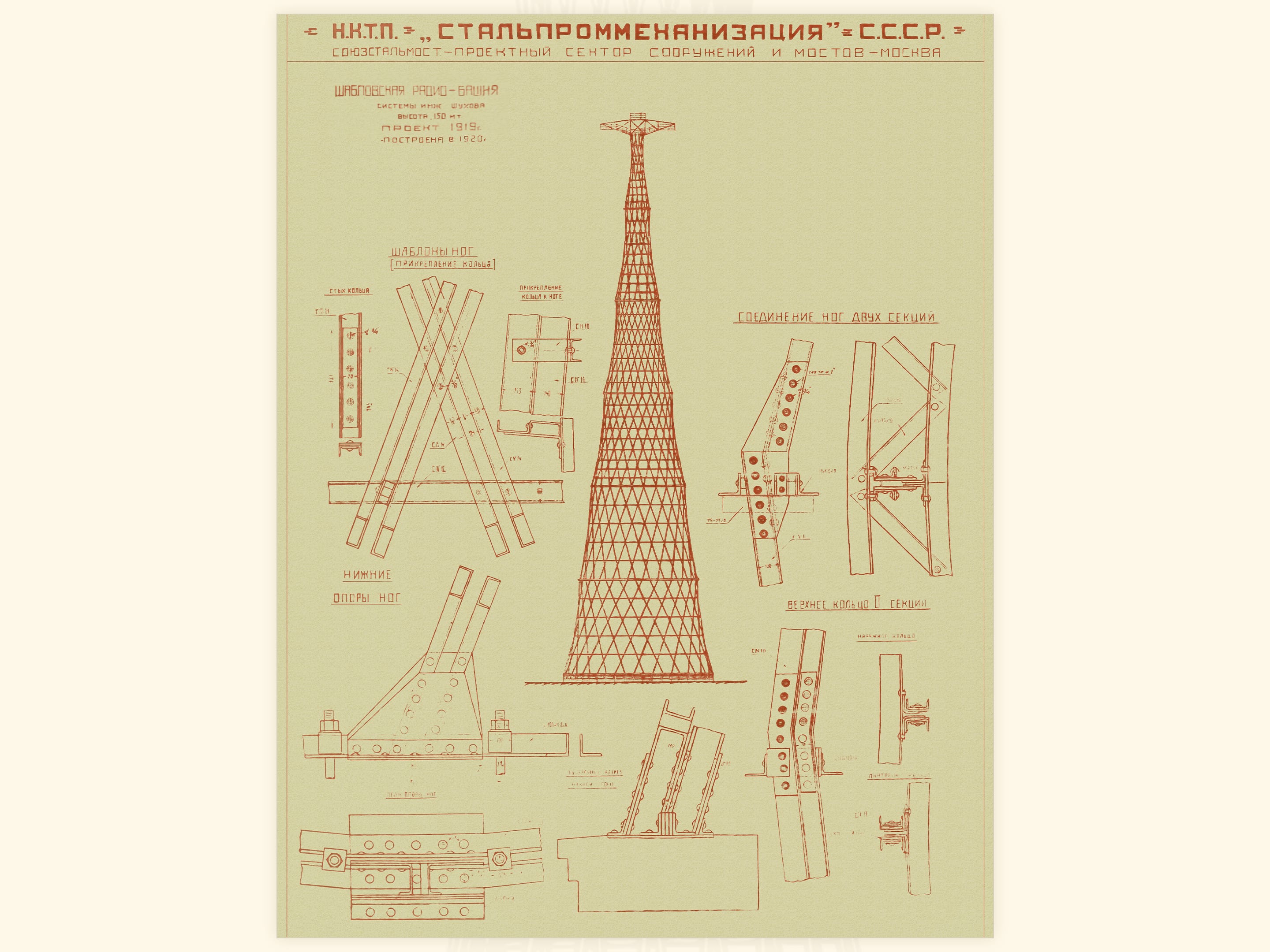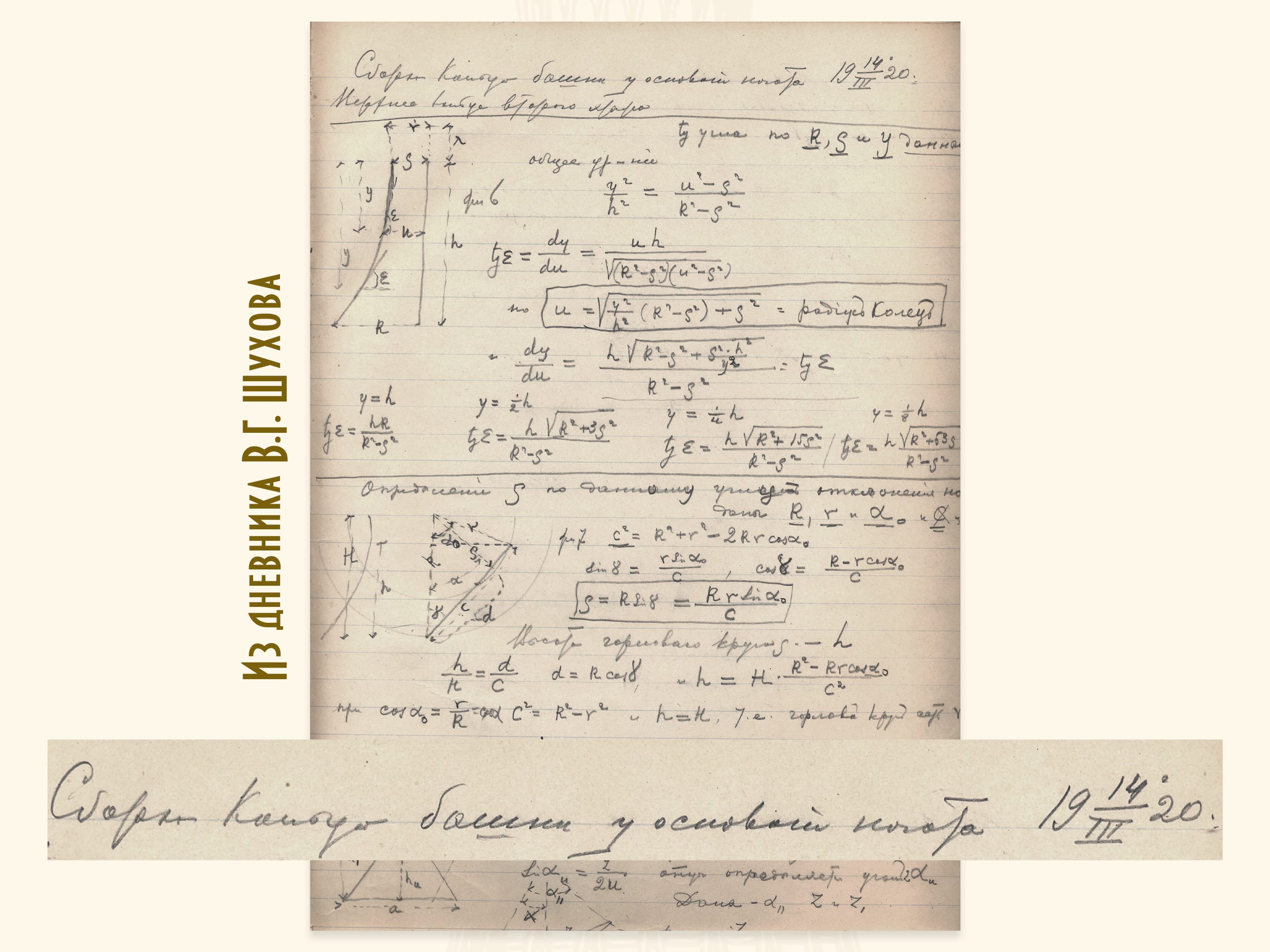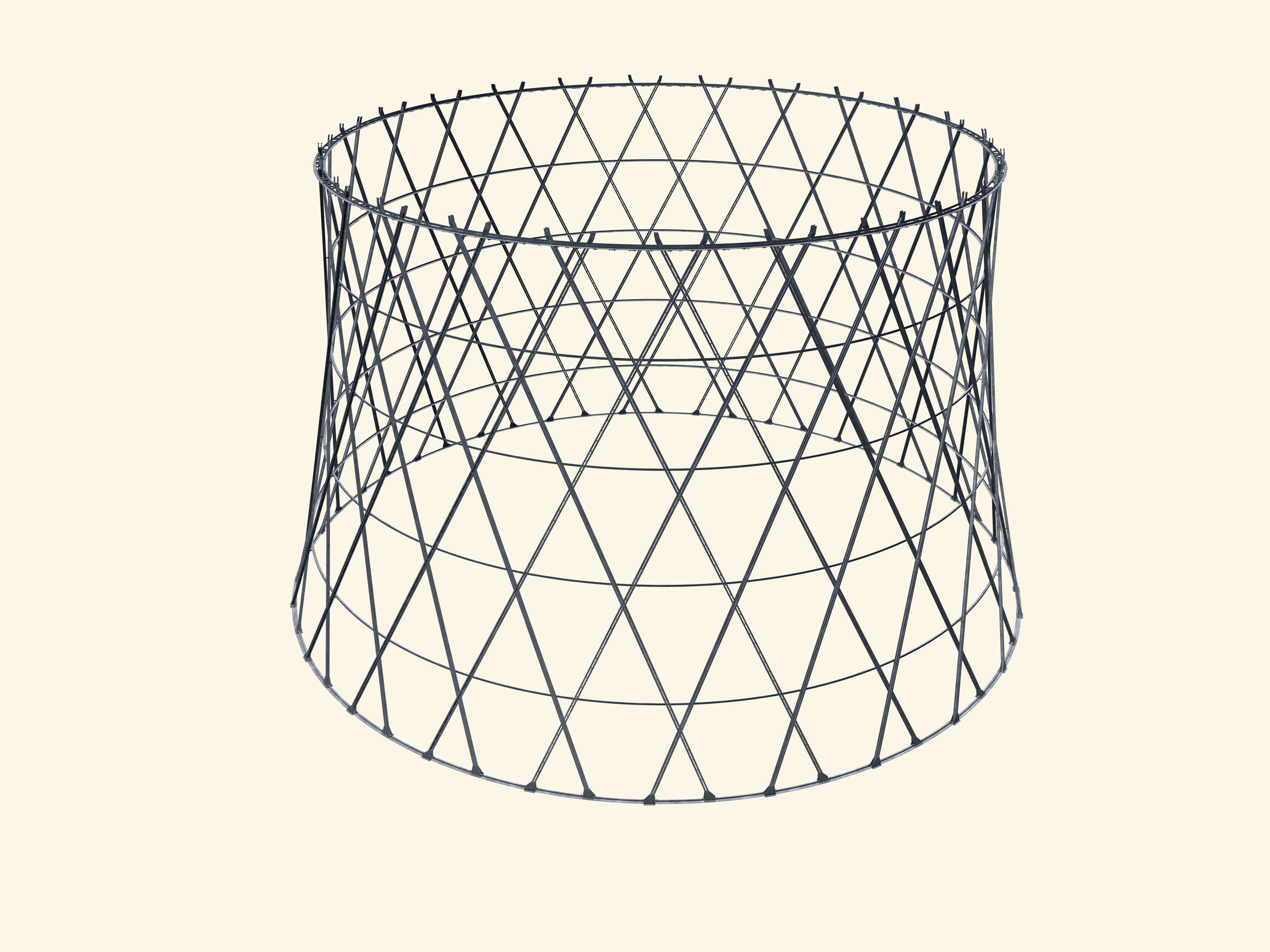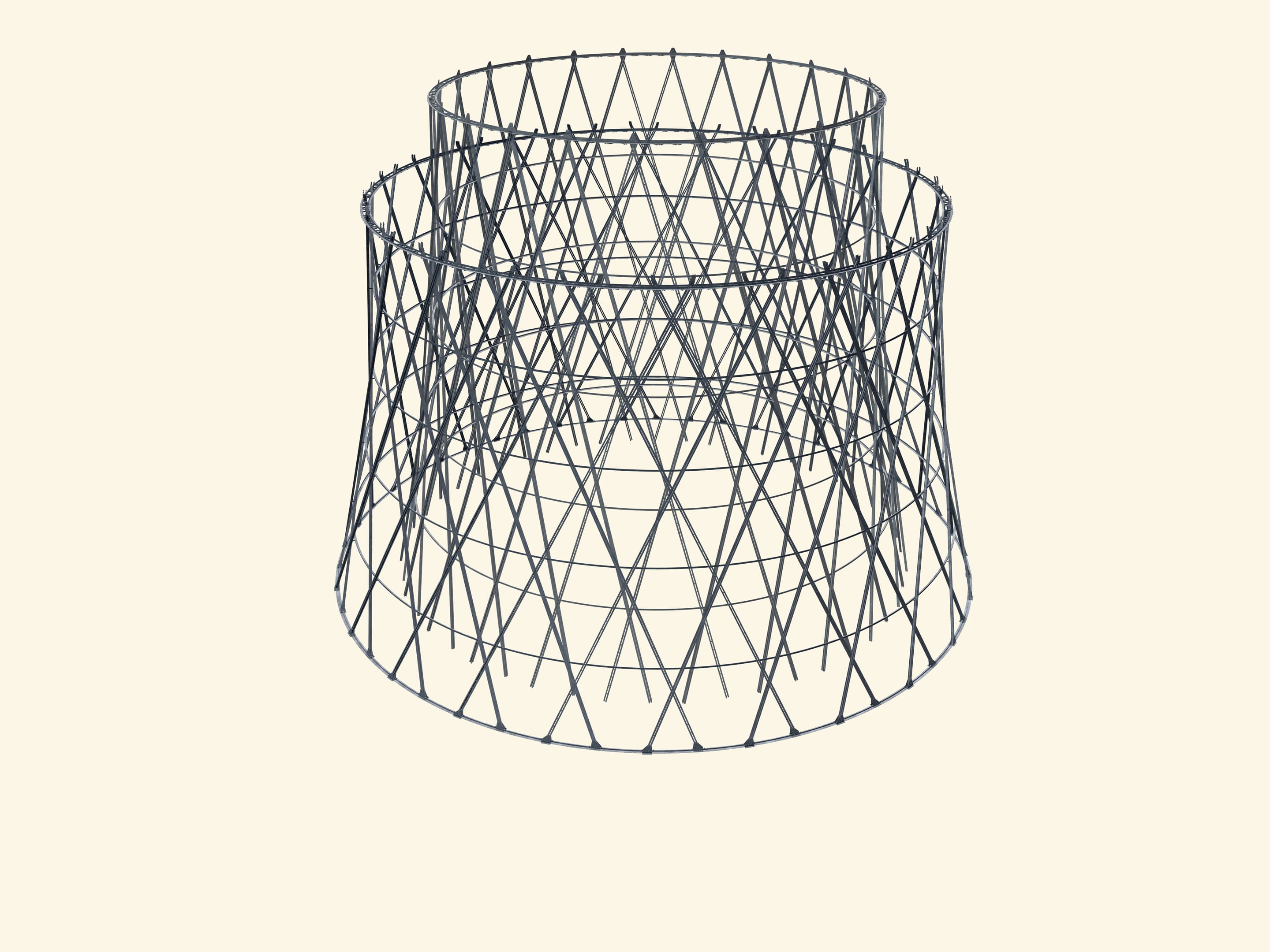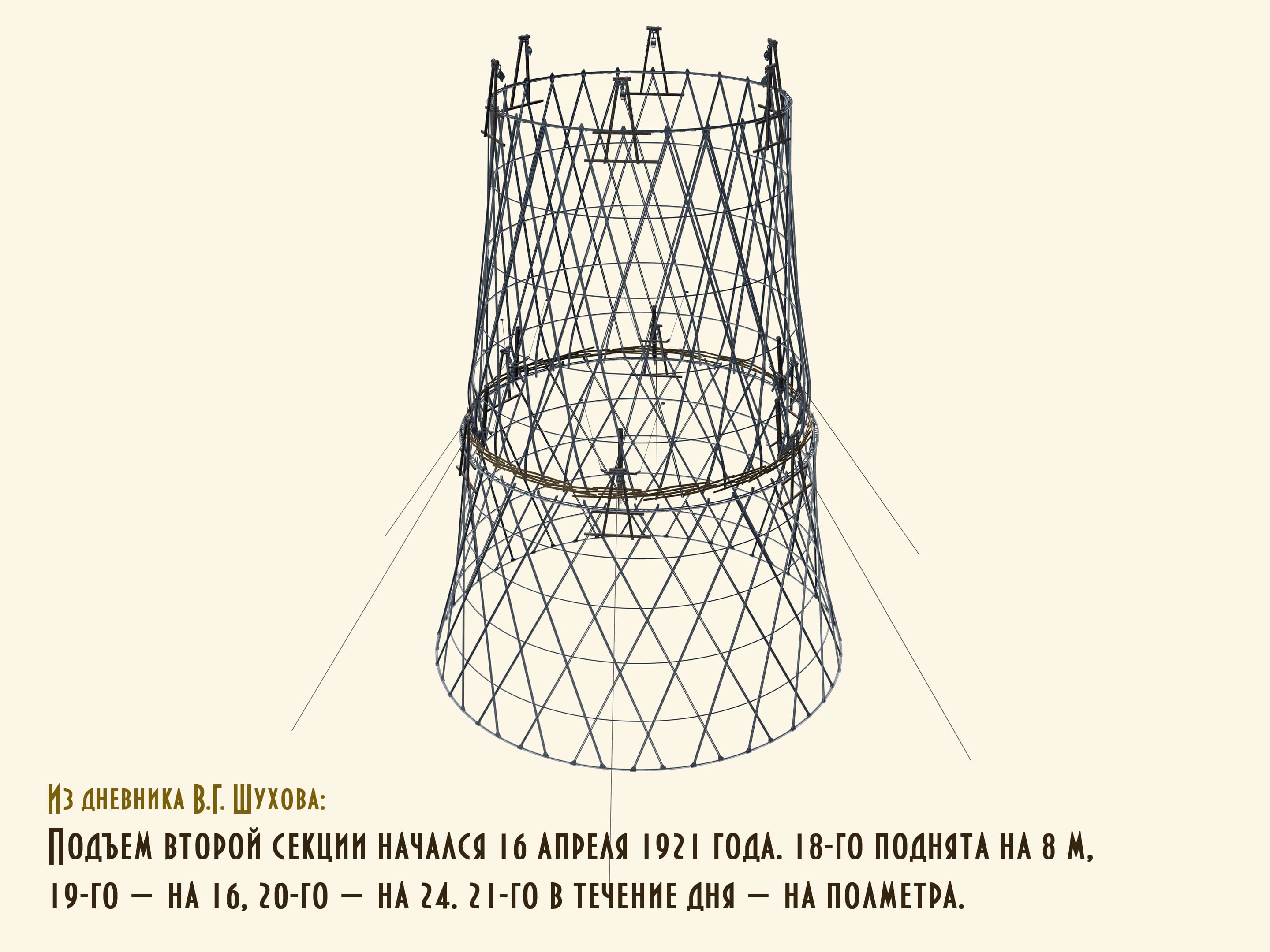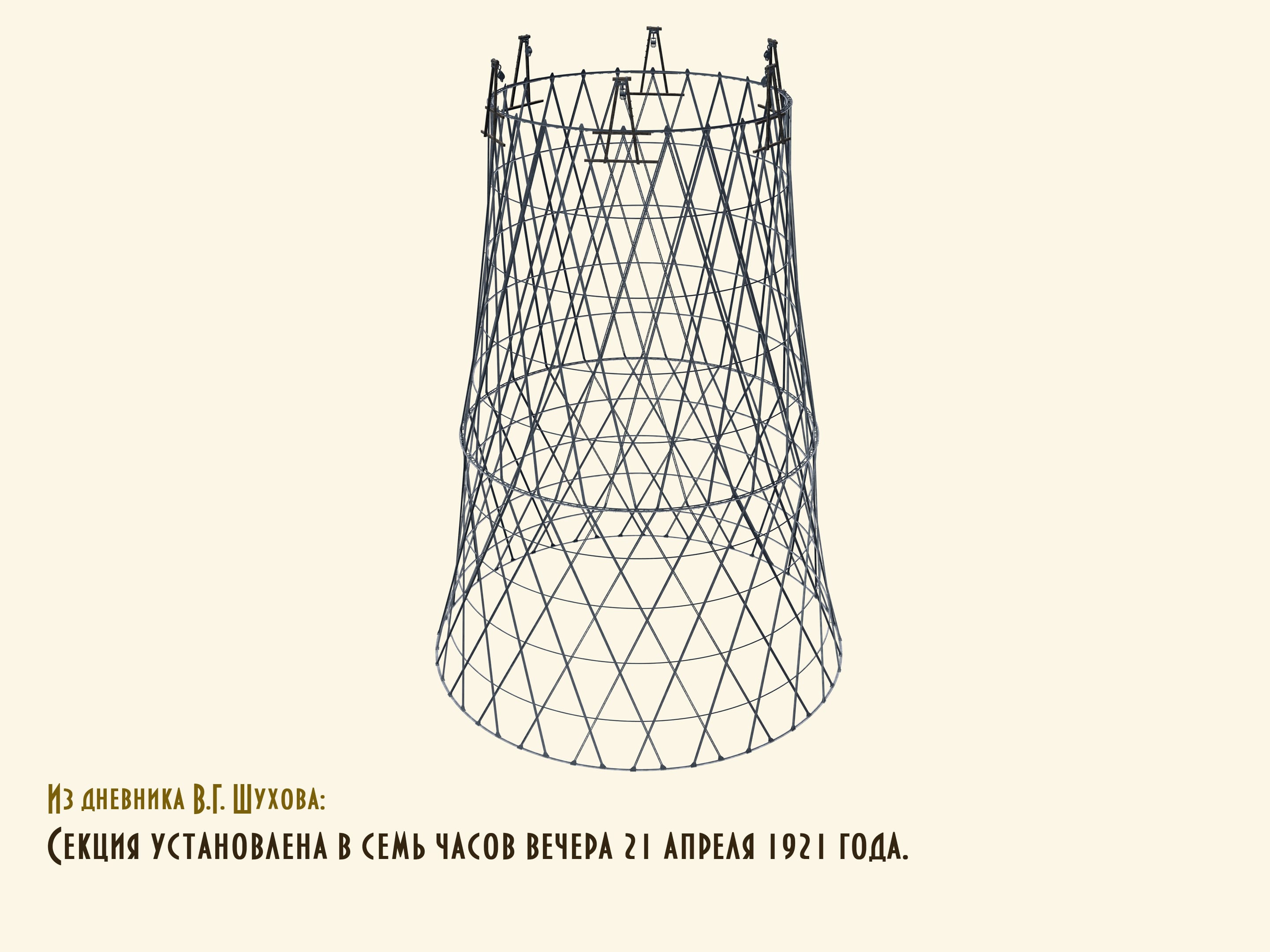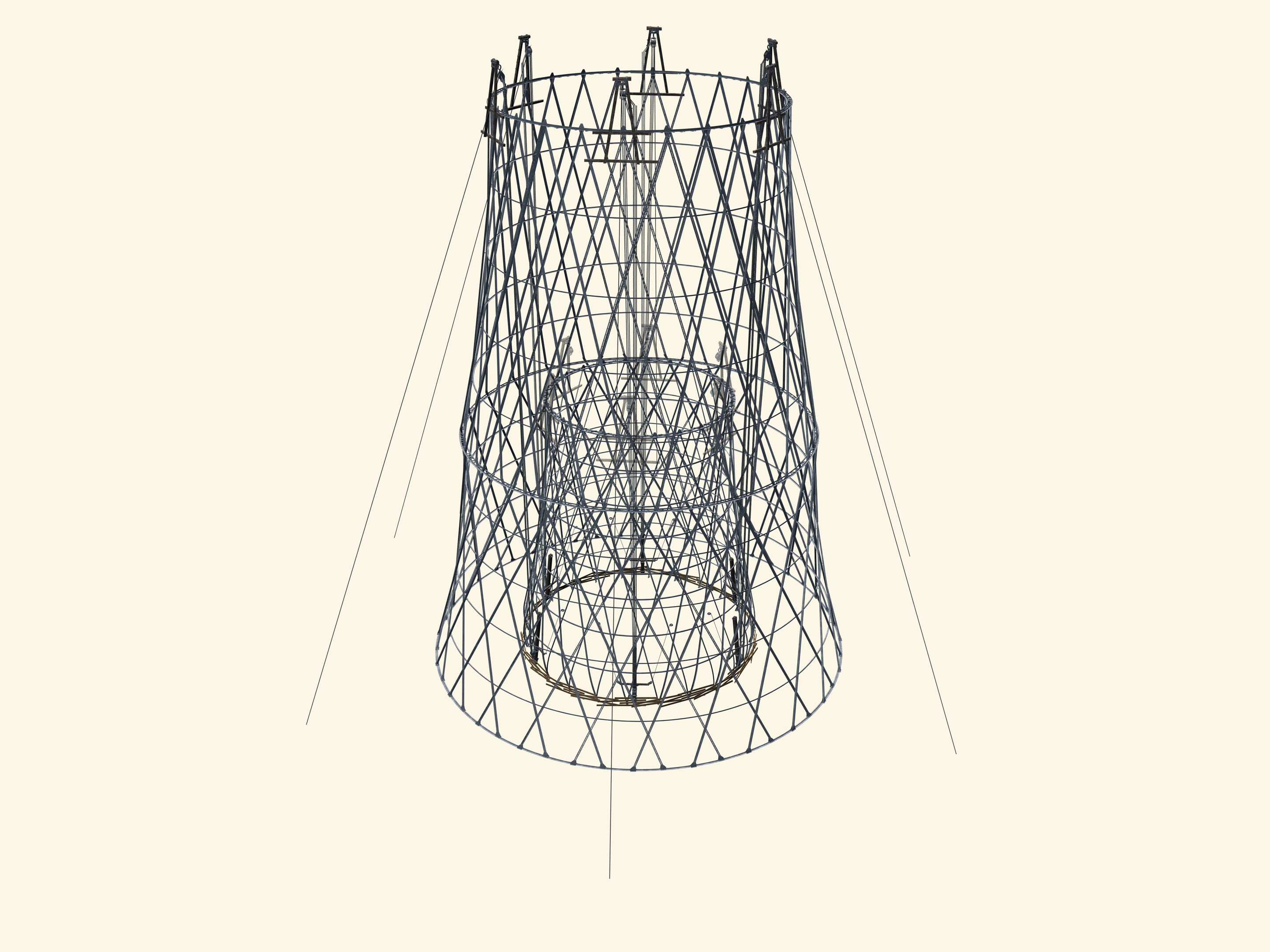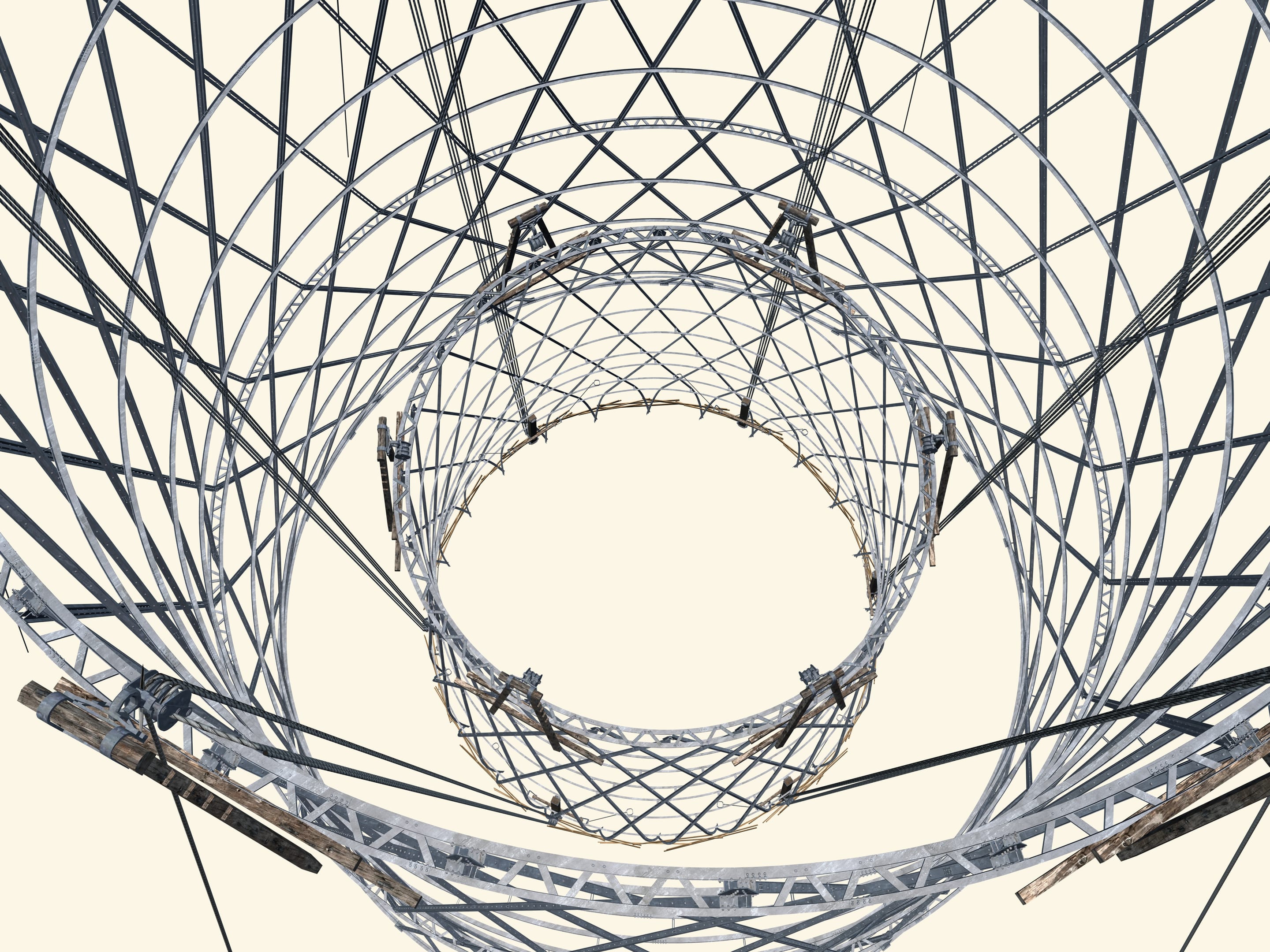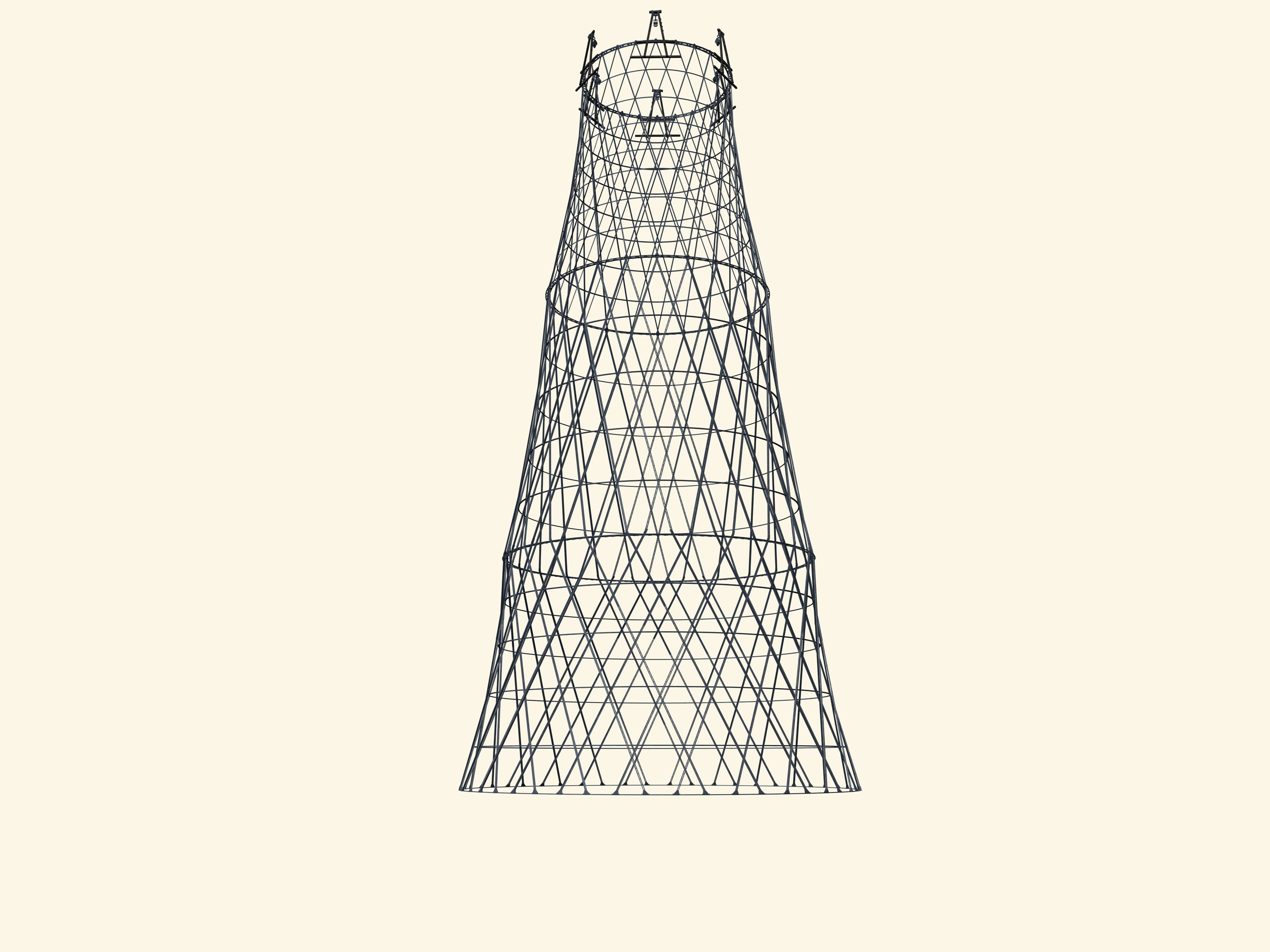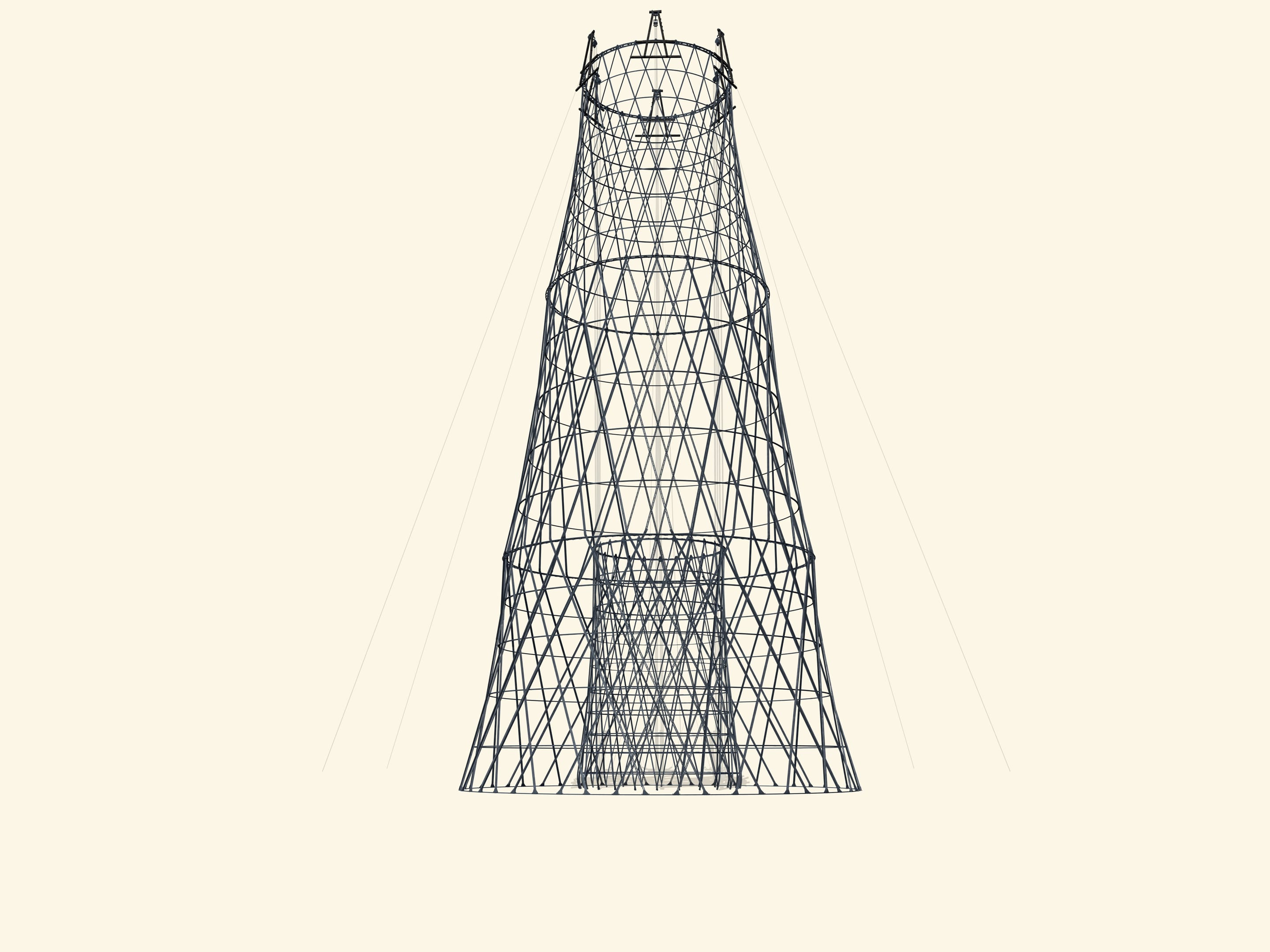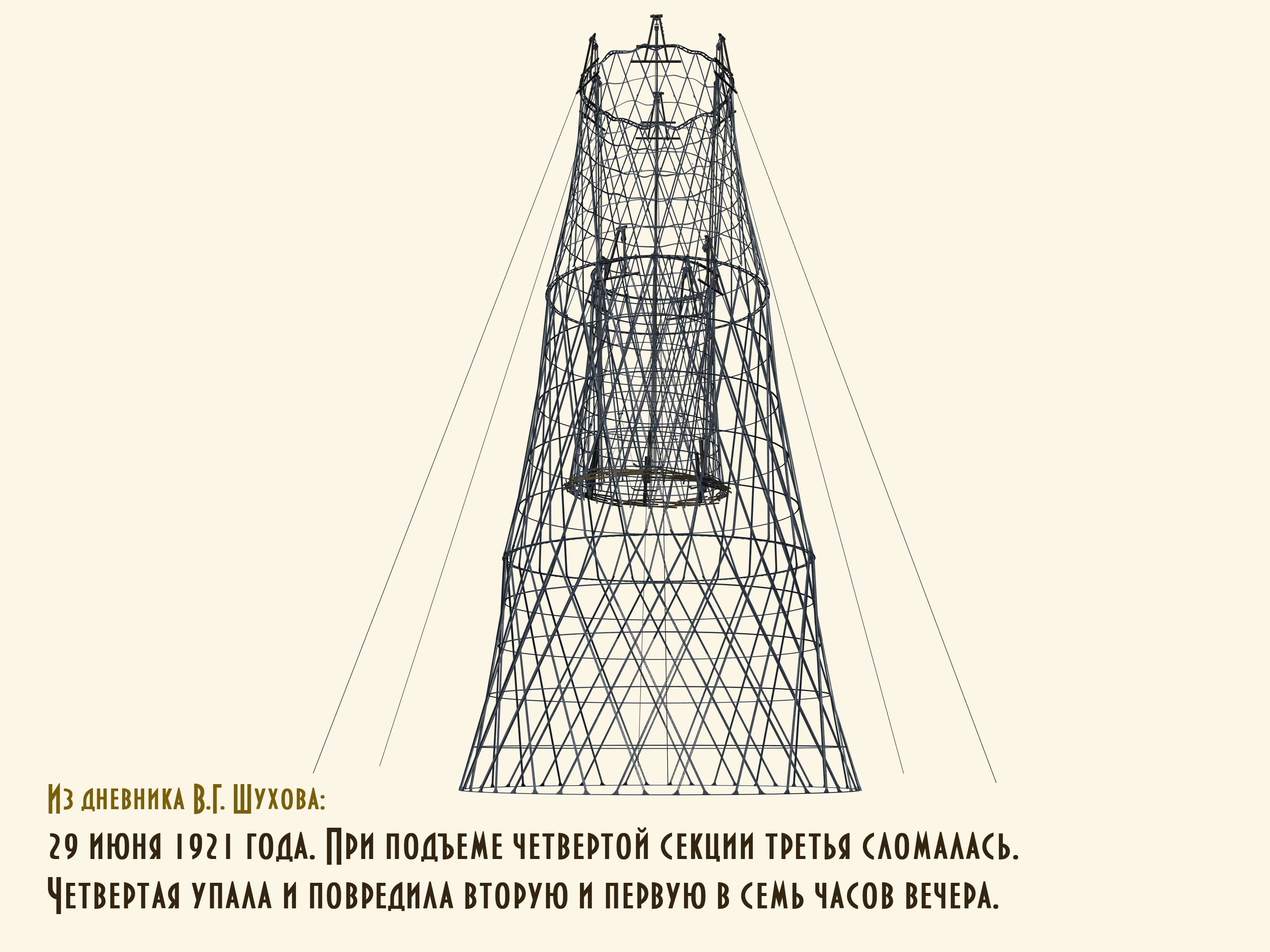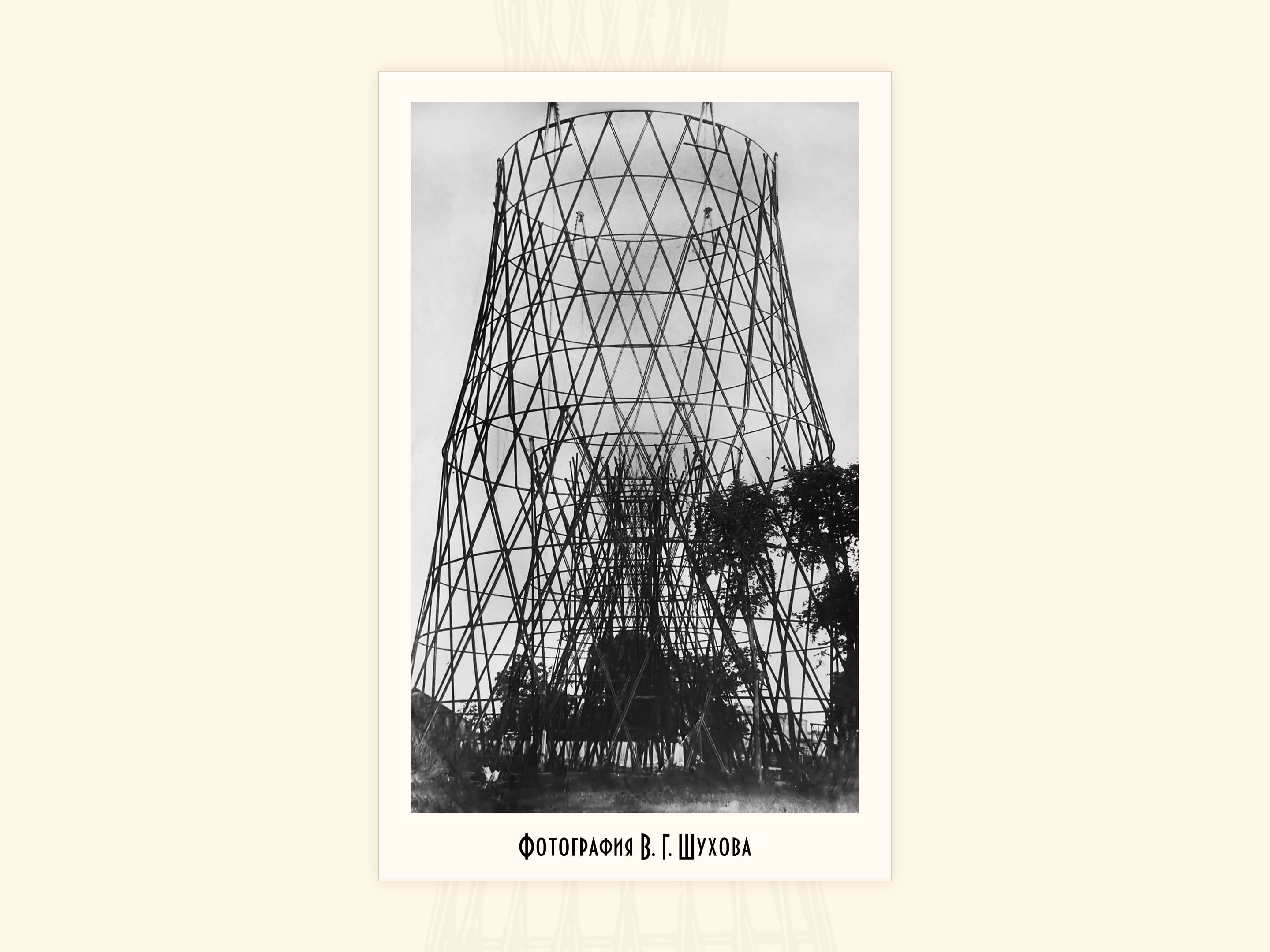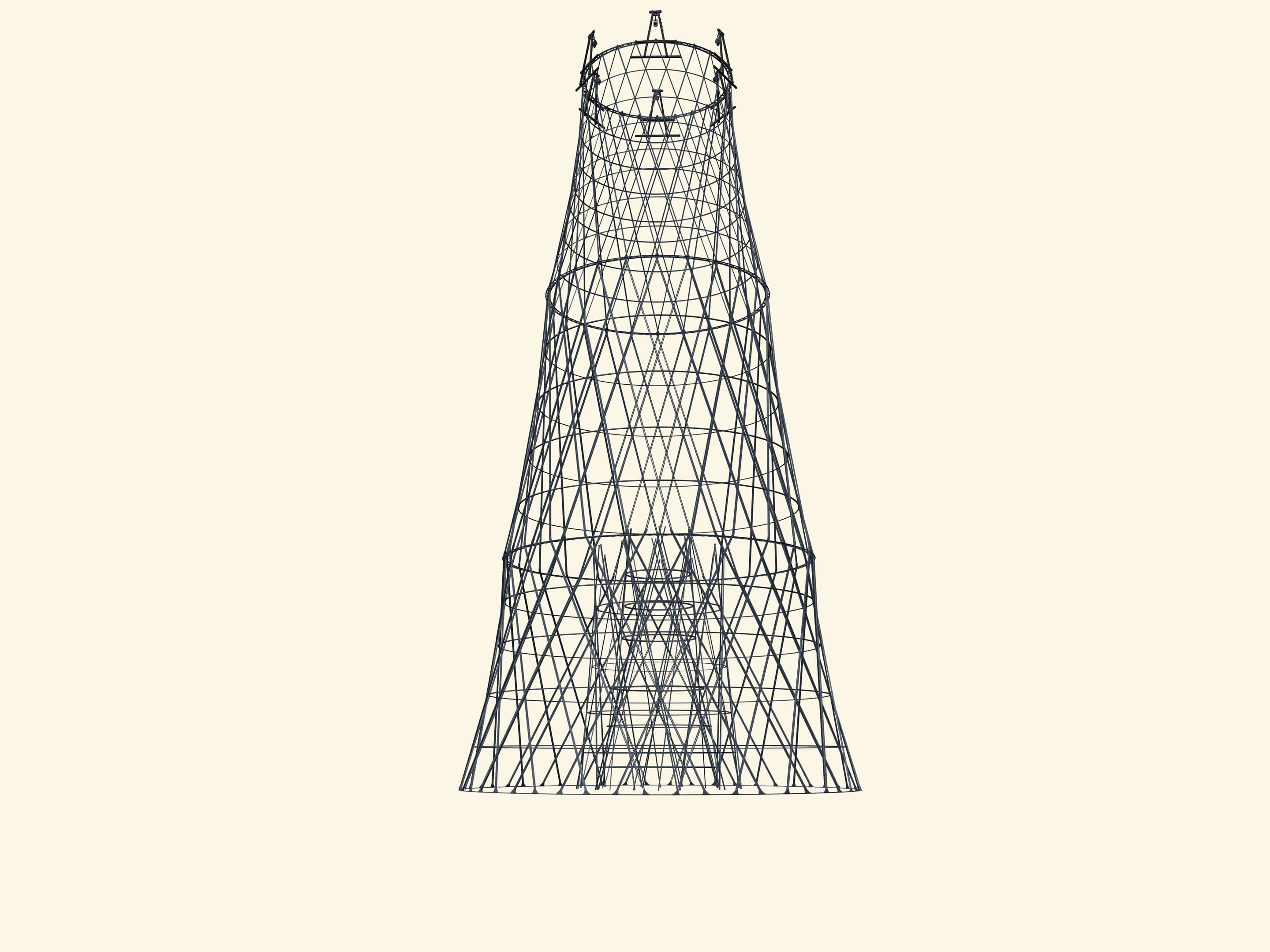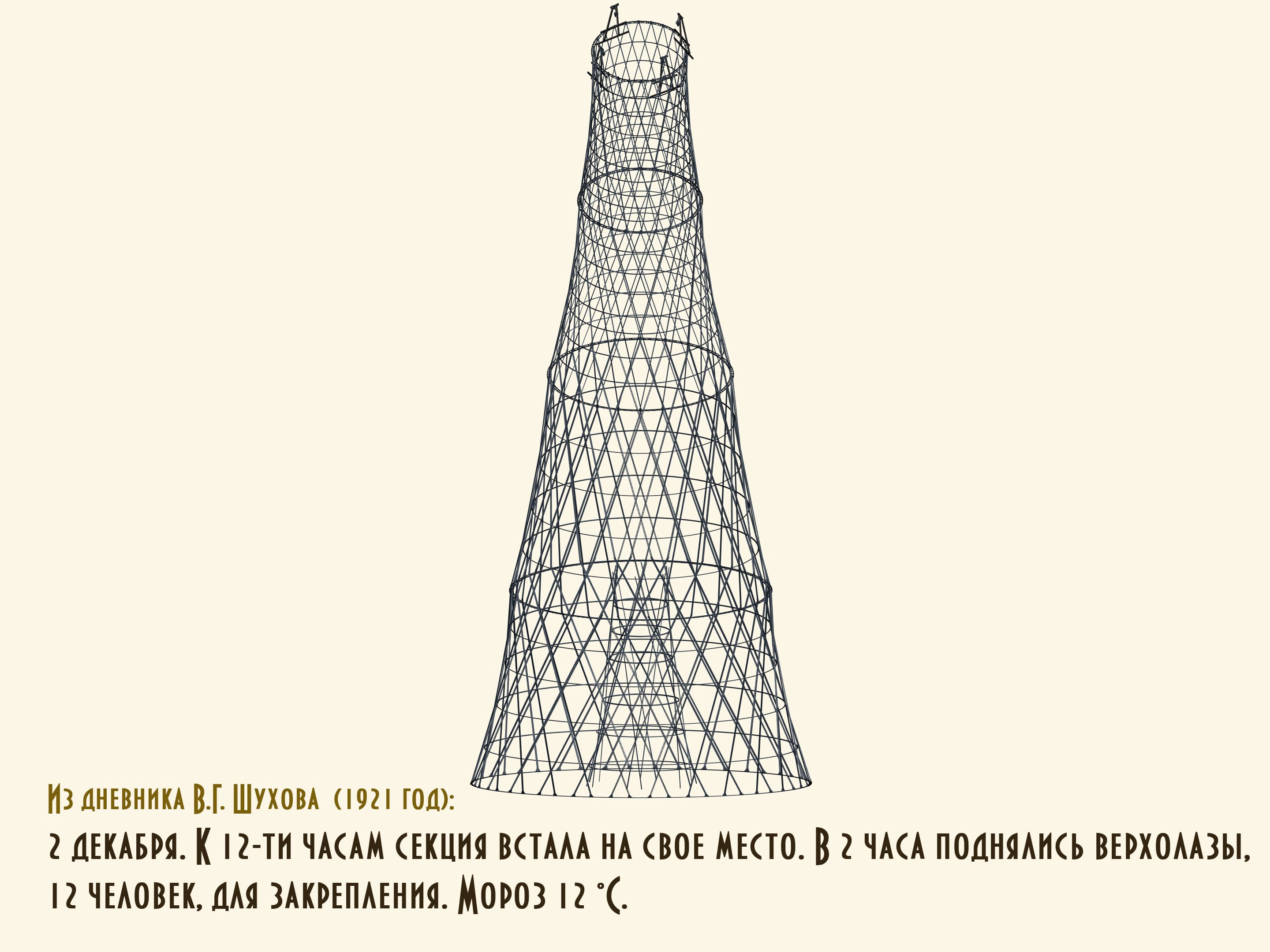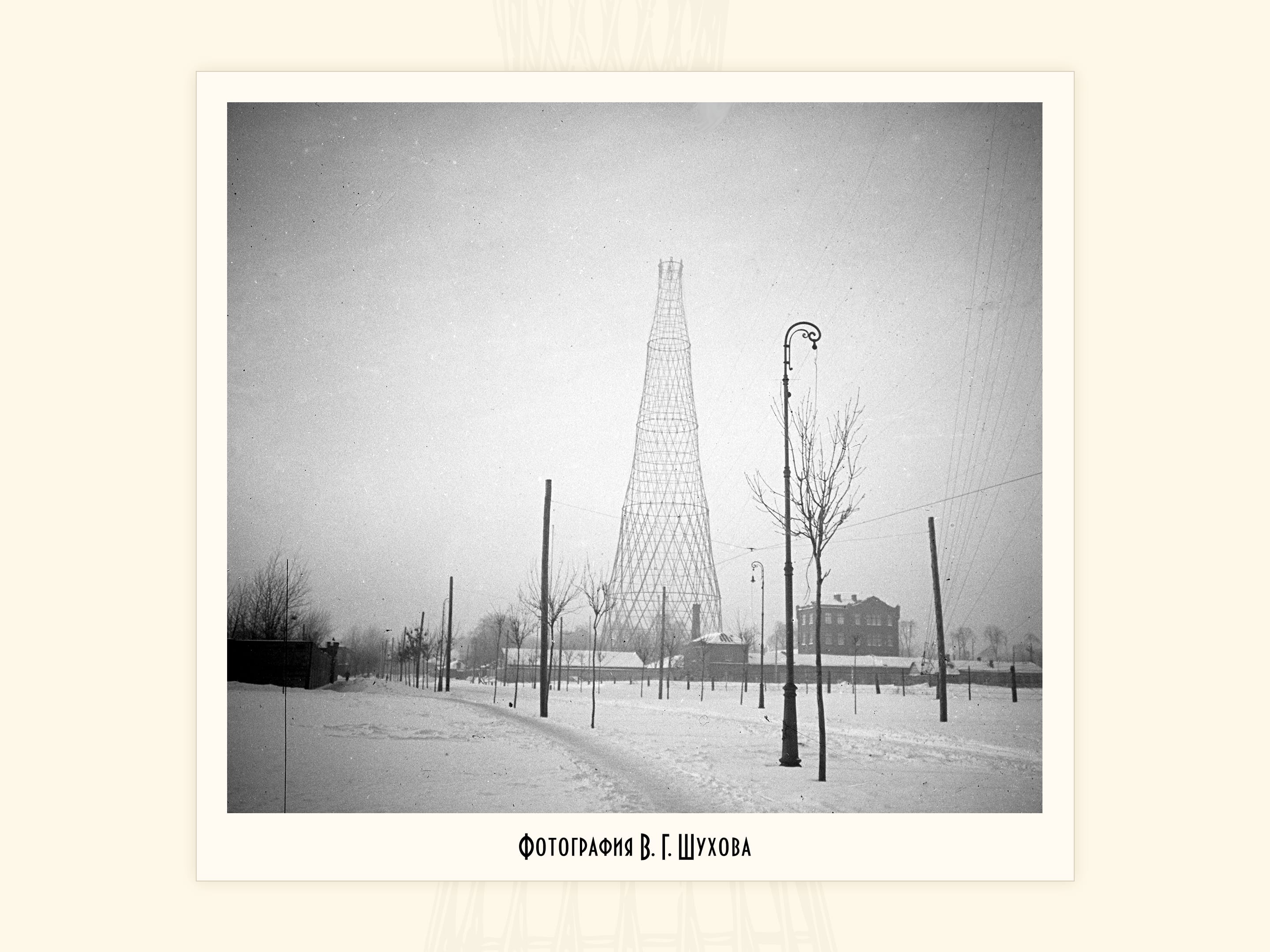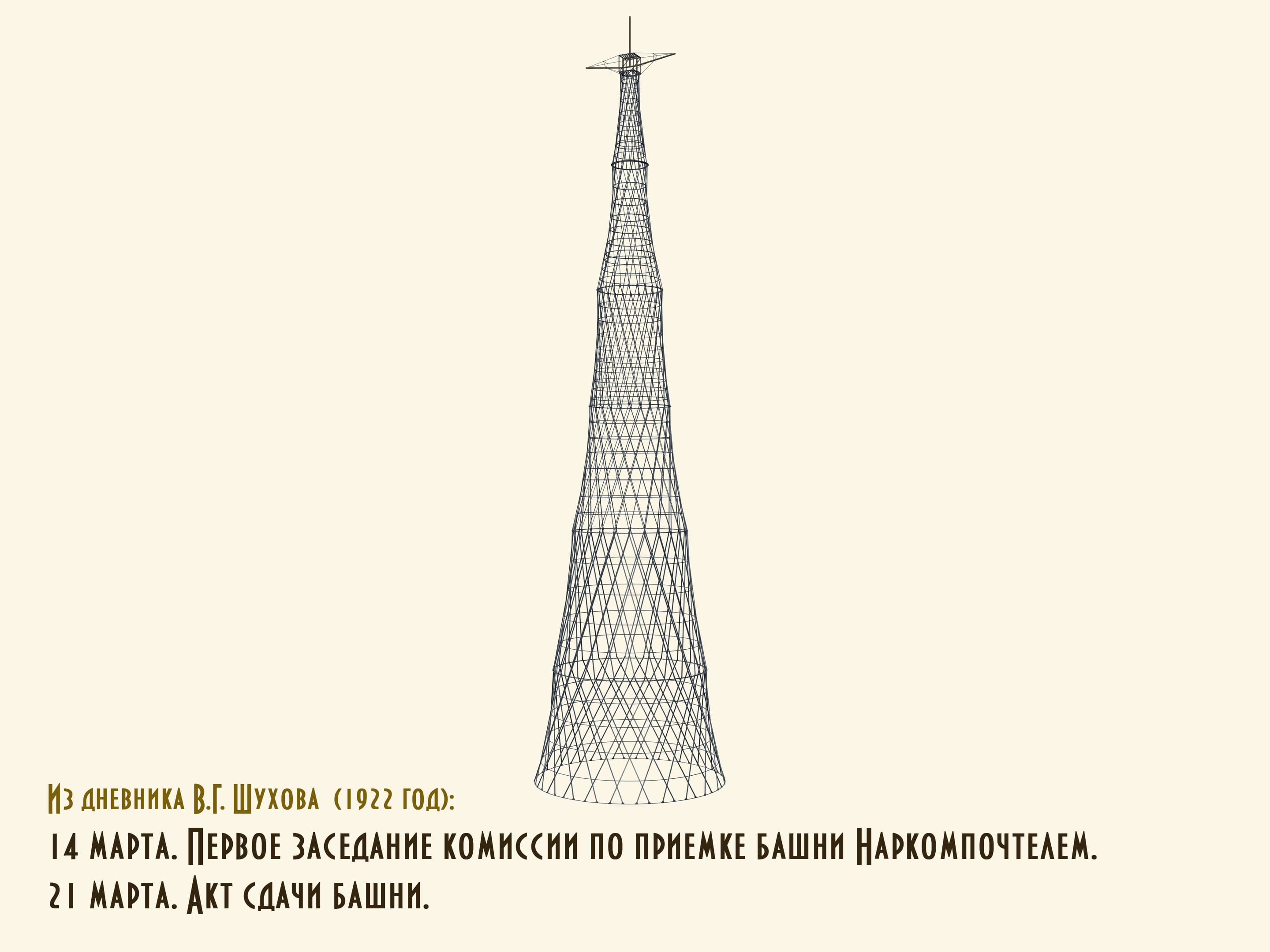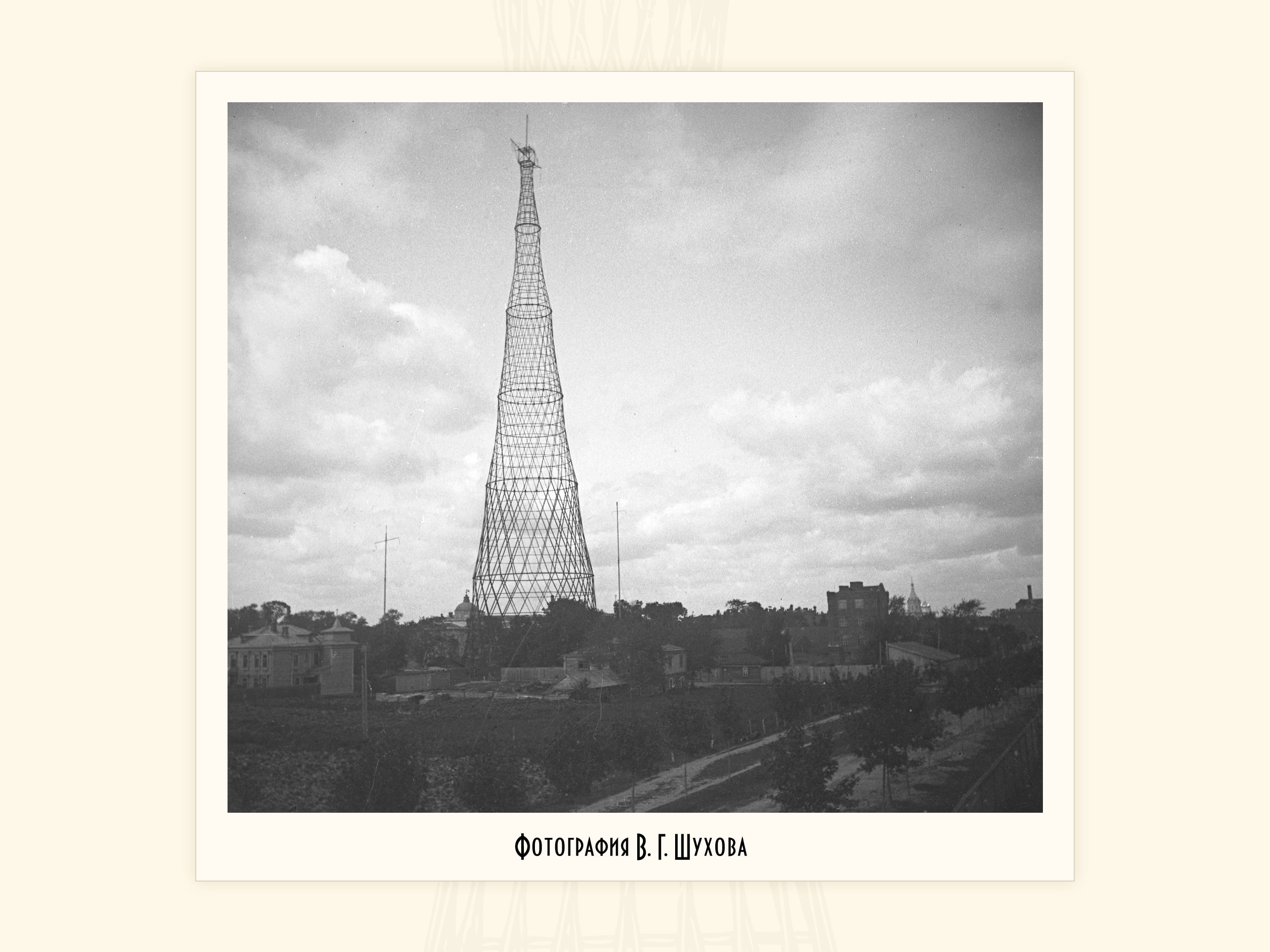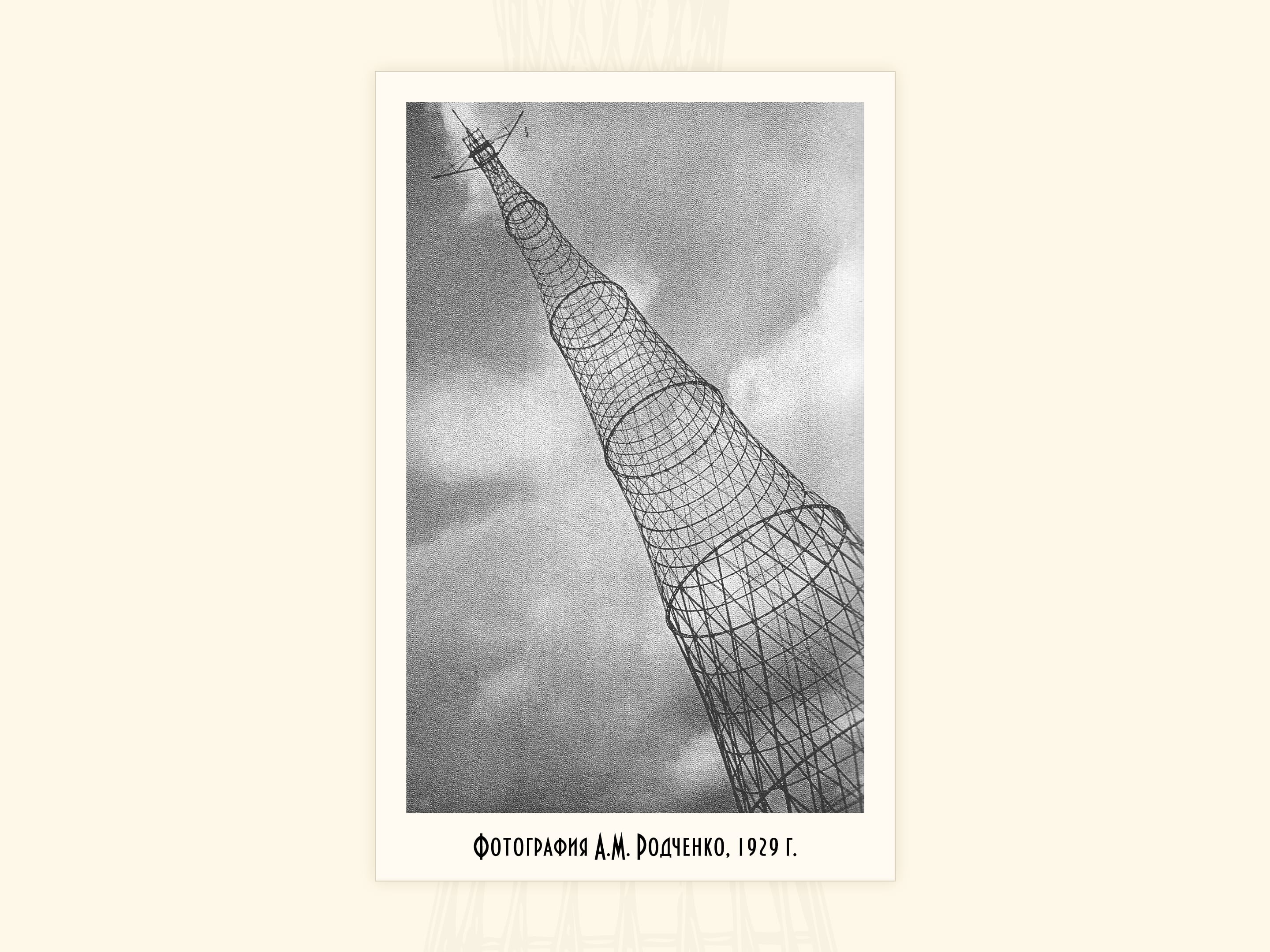Russian industrial and art exhibition, which was held in Nizhny Novgorod in 1896, has become the largest exhibition in Czarist Russia. It was a demonstration of scientific and technologic progress in Russia of that time, and also a triumph of the Great Russian engineer Vladimir Shukhov.
Vladimir Shukhov was born on 16 (28) th of August in 1853. In 1876 Shukhov graduates from the Imperor Moscow technical college (now MSTU of Bauman) with flying colours and receives a diploma of an engineer-mechanic. Great Russian mathematician Paphnutiy Chebishev offers a young man an internship in mathematics and mechanics, but Schukhov chooses a career of an engineer. He goes to Philadelphia for a World exhibition to study the last world technical achievements and starts his engineering career when returning to Russia. However, he continues his academic work-he solves practical tasks on the basis of profound academic research. In 1929 V. Shukhov was chosen as an honorary member of the Science Academy of USSR.
His inventions include equipment for recycling and keeping oil, the first petroleum pipelines, projection and building of oil-tanker ships, a nozzle for burning fuel oil, industrial realization of termic cracking, heating pots of a convenient construction, projection and building of railway bridges, architectural net costructions and closures of different types. Сoverings and loading docks of Shukhov cover Pushkin (Tsvetaeva) Museum of fine art, GUM, Petrov passage, Belorusskiy railway station, Kievskiy railway station, Bakhmetievskiy garage, as well as industrial objects of Perm, Chelyabinsk, Magnitogorsk and many other cities of Siberia and Ural. Hovewer, this engineer is famous to most of us for his another creation — the tower on Shabolovka.
The covering of central exhibition halls on the exhibition in Nizhny Novgorod in 1896 was projected by Shukhov. In front of the major exhibition hall there was an elegant water tower 25.6 metres high. Its can, which could contain 144 thousand liters, provided all the territory of the exhibition with water. On the can there was an observation point, where one could climb up a circular ladder inside the tower. The first building like this was constructed by Shukhov in a yard of an office in Bari, where he worked, still the era of hyperboloid constructions starts from this second tower, represented at the exhibition. The tower was very beautiful, and after the exhibition a rich landlord Nechaev-Maltsev bought it and settled it in his estate Polibino near Lipetsk. The tower still stands there now.
A privilege (in modern terms - a patent) for a chiselled tower in a shape of a hyperboloid was claimed also in 1896.
Privilege (patent), issued on March 12, 1899.
Description of an openwork tower.
To the privilege of engineer-mechanic V. Shukhov, in Moscow, claimed on January 11, 1896.
The reticular surface which forms the tower of the suggested device consists of straight timber planks, iron pipes and corners, resting on two rings, one at the top and one at the bottom of the tower; the bars, tubes and corners are jointed at the points of intersection. The resulting grid forms a hyperboloid of revolution, with a series of horizontal rings running across its surface. The resulting tower is a sturdy structure that resists external forces while using significantly fewer materials. Material usage is significantly lower. The primary application of such a construction is foreseen for water towers and lighthouses.
Subject of privilege.
An openwork tower, characterised by its structure made up of straight wooden planks intersecting one another, or steel pipes, or angled rods, arranged along the axes of the rotating body of which the tower takes the form, riveted together at the intersection points and furthermore jointed by horizontal rings.
Shukhov projected hundreds of hyperboloid (“chiseled”) water towers, they were constructed in different parts of Russia. Note that every tower had its unique particularities — both relevant technical and artistic—as a real engineer, Vladimir understood that a tower must both fit in the architectural face of a city and make it more beautiful.
Big and a small lighthouses of a hyperboloid construction are still preserved near Herson. One more unique hyperboloid construction of Shukhov are four bases 128 metres high for passing an electricity transmission line of State Region Electricity Station of Nizhny Novgorod across the Oka near Nizhny Novgorod. Hyperboloid constructions were even used as pillars of ships.
However, the most famous Shukhov’s construction is the tower on Shabolovka. The history of its construction starts from the statement of Workers’ and Peasants’ Defence Council in 1919 about the necessity of constructing a radiostation in Moscow.
Statement of Workers’ and Peasants’ Defence Council.
1. To ensure a reliable and permanent connection of the Republic centre with European states and outskirts of the Republic,
the National Commissariat of Post and Telegraph is highly urgently ordered to construct a radiostation in Moscow.
It must be is equipped with devices and machines, which are the most exquisite and have a power, which is enough
to execute the given task.
2. All state organizations and institutions are suggested to collaborate in a proactive way with National Commissariat
of Post and Telegraph, in order to provide all the necessary materials, railway, water and horse-drawn transport
and to attract qualified and non-qualified workers to this job, providing them with food and shelter.
3. The workers, responsible for construction of the radiostation, should be considered drafted on their workplace
and therefore not liable for military conscription/regardless of age/until the radiostation is finished.
4. All qualified and non-qualified workers, who work on construction of the radiostation, should be given food
ration of the Red Army, until сonstruction of the radiostation finishes.
5. To control on fulfilling this task in short time and to ensure that the work is done properly, a special commission,
includin workers of Commissariat of Post and Telegraph, representatives of Higher Council of National Economy State Control
and from Radio-Section of Proletarian Council of National intercommunication — should be established, by order of Commissariat
of Post and Telegraph; members of the commission should be entitled to a special premium within norms, provided by regulations
of Community of Independent States about part-time work.
Сhair of Defence Council V. Ulianov/Lenin /
Moscow, Kremlin
30 July 1919.
Vladimir Shukhov developed a project of a hyperboloid tower 350 metres high. Being 50 metres higher than the Eiffel tower, a construction of a Russian engineer makes a building more stable and four times lighter. However, as the country faced an acute shortage of iron after revolution, they couldn’t find a quantity of iron, which was necessary for building a tower.
Shukhov develops a new project of Shabolov (the area of construction was called in this way) 150 meters radiotower.
In Moscow of 1919 there was inflation, hunger, lack of metal, nevertheless, preparation for building a tower continues, though with forced pauses.
During all his productive life Vladimir took notes in large-format copybooks, and the first note, which was related namely to constructing a tower, claimed : “Assembly of a ring of a tower on the basis is started on the 14th of March 1920”.
Apart from developing namely the construction of a tower, Vladimir makes up a unique method of construction. There were no cranes of the necessary height at that time, and buildings were usually constructed in forests. But according to the telescopic method of Shukhov, even forests were not required!
All sections of the tower were assembled on the ground. At first the first section was assembled, and then there was the second section was assembled inside it. On the top of the first section and the lower part of the second the blocks, which were joined by a system of wire-ropes, were settled. In order to prepare for construction of the third section, upper blocks were settled on the second section, when it was on the ground. It lower part was pulled down-in order to make it pass through upper neck of the higher section, which was equal to it.
“Raising of the second section was started on 16 April 1921. On 18th it was raised for 8 metres, on 19th — for 16 metres, on 20th — for 24 metres. On 21st it was raised for a half-meter during the day. The section was established on 21st of April 1921 at 7 p.m.” — this is a note from Shukhov’s diary.
The general idea, which was applied to first two sections, -after output of the upper section a strainer was released above the lower section, and fastening of rafters began-channels that form a hyperboloid of the upper section, were joined by bolts with correspondent channels that form the lower section.
The third section was raised according to the same scheme. However, an emergency happened during the rise of the fourth section. From V. Shukhov’s diary: “29th June 1921. The third section has broken during the rise of the fourth section. The fourth section has fallen down and has caused damage to the second and the first section at seven p.m.”
A unique photo of a tower after the emergency has been preserved in one of the villages of Gorohovets area in the region of Vladimir. The case is that most high riggers that built the tower were from that area. The photo was found by a writer-area studies specialist/local history expert from Gorohovets city-Nikolai Andreev.
The meetings of the commission, which were inevitable after that event, have been started. Though the result of the analysis was a conclusion that a construction was flawless, and it was poor- quality metal of the third section that hasn’t resisted, Shukhov was sentenced to a conditional shooting. Сhoosing and searching for material for constructing a tower starts again. When the works have been restarted, it was decided to build sections on earth at the same time-one in another, in order to save time.
One can see on the photo, made by V. Shukhov, that inside first two renovated sections the third, the fourth and the fifth sections are banded together at the same time.
On 24 October 1921 everything was ready on the tower for rising the third section.
From the Shukhov’s diary of 1921:
27th of October. Raising of the third section has been started. There is a cold wind. The work goes smoothly. A hexagon works very well now.
28th of October. The rise continues. The section is raised on the half of the second floor.
29th of October. The raising has finished. Fixing has begun after lunch.
Additional raising for 2 and 3 inches.
Dangerously big efforts are required while raising one stand of six.
One stand demanded downward movement, and tension of one ring was approximately equal to zero.
Measures are to be taken to prevent such deformations in the future.
Rising of the section is also nonuniform. The indicators are not exact enough.
One has to take measures to avoid such deformations in the future. Workers and masters are afraid
of minor noise Sections are to be remade with according to accuracy of their adjoining,
and they stand only on three points, not on six.
For the wind there remains only a riveting during drilling out holes.
30th of October. Wooden adjustments have been dismantled.
4th of November. Stands in the third section have been settled. Outer and inner stands are fixed to the rings. Bolts have been delivered. The fourth section has been assembled — there are 20 stands.
18th of November. The fourth section is almost finished. I have been on a tower.
24, 25th of November. I have been on the tower. The upper stands have been settled, and the section is ready for raising.
28th November. I have been on the tower. In the evening the lower part was loaded and raised for 6 inches.
29th of November. The raising of the section has been started. It is cold on the tower — 8.6F.
30th of November. The raising continues. In the evening the section is raised up to 40 metres.
1st of December. The section as been raised to the top. The section сomes out of the sixth ring. At 12 the section has taken its place. At 2 high riggers (12 people) rose, for fixing it. It’s 10.4F.
3rd December. During the works they continue to fix the fourth section.
24th December. The fifth section is ready for a rise.
26th December. Start of raising the fifth section. […] A test to raise with three stands instead of six.
27th of December. The fifth section is raised on the half of the height.
28th December. The fifth section has gone over the fourth for 10 metres.
29 December. Raising of the fifth section is stopped for a while because
of severe snow and wind […]
Fixing of a ring of the first/second section, where one needs
to lay 4 rivets of 5/8 inches.
30th December. At 2 o’clock the fifth section took its place. At 4 high-riggers fixed 6 stands.
31st December. Establishing the fifth section.
On the 3rd of January works on construction of the tower are already continued. On the 10th of December adjustment of the sixth section starts.
From Shukhov’s diary of 1922:
7th of February. At 3.30 p.m. the sixth section was raised to the 4th, going through three sections in 10 working hours. We raise 12 feet in 12 minutes, tugging of a rope takes 18 minutes. We understand that the time is lost. We need to take into consideration that 1 foot of rising takes 3 minutes.
8th of February. We have raised up the half of the sixth section at 3 o’clock.
9th of February. In the morning the sixth section has been established. The weather is calm, 17.6F. By 4 p.m. 8 stands are fixed. The tower is beautiful, but the fifth section has rare net.
10th of February. All 24 stands of the sixth section are established.
14th of February. A ring of the sixth section is fixed, and, in fact, the tower is finished.
Establishing of the top has been started, and we plan to finish the work in 10 days.
The work on polishing and establishing of two lower sections has lasted for five months. 2.5 years have passed
from the day of signing the contract with Electroconnection on building the tower. All the work has lasted
for 2 years.
21st of February. The upper house is raised, and rising of a wooden mast has started. A draft of a flag is given.
22nd of February. The upper mast is raised and building of cross-arms has been started.
23th of February. One cross-arm is raised, with pulling. Raising of the second cross-arm has started.
28th of February. The building of the tower has finished, and a mast is fixed.
14th of March. The first meeting of the commission on acceptance of the tower by National Commissariat of Post and Telegraph.
21th of March. An act of handing over a tower. There are articles in newspapers “Izvestiya” and “Rabochaya Moskva”.
According to the photo of the tower, made by Vladimir, one can judge, how the region of Moscow, where the tower stayed, looked like at that time. The most famous Two photos of Shukhov tower on Shabolovka, made in 1929, belong to a classic of Sovietic constructivism in photography-Alexander Rodchenko.
On 19 March 1922 a transmission unit of Shabolov radiostation was tested, and in September 1922 the first radioprogramme from Shabolovka was launched-a concert of Russian music.
A superstructure of the tower has changed many times for technical needs of radiostations. Several rings, which draw together sections, were finally added to the tower.
In 1939 the tower acquired an ability to broadcast TV signal and has become a symbol of Soviet TV for many years.
In the end of XX century and in our days several big hyperboloid constructions were built in different countries. Famous foreign architects, which have developed them, admit a great contribution that great Russian engineer Vladimir Shukhov made in developing such constructions.







